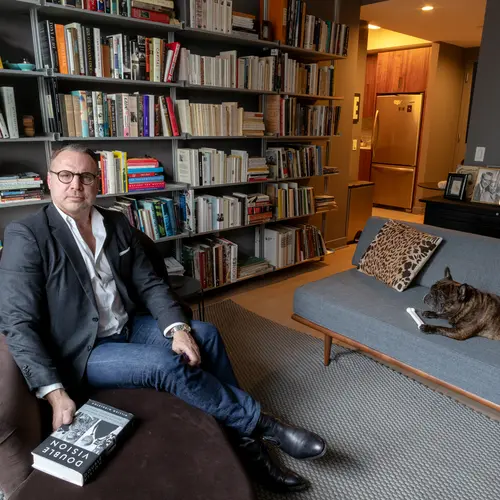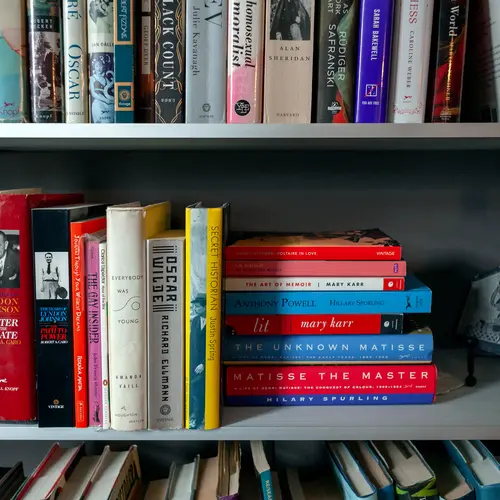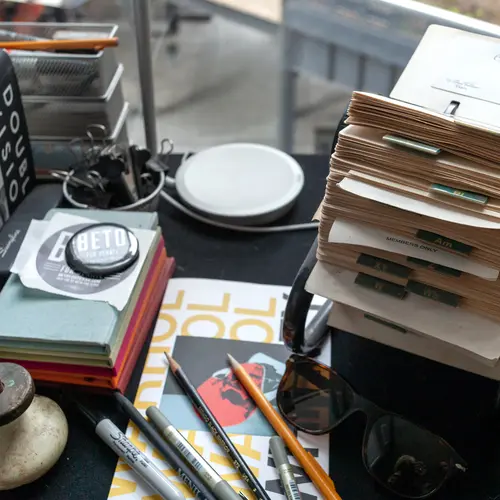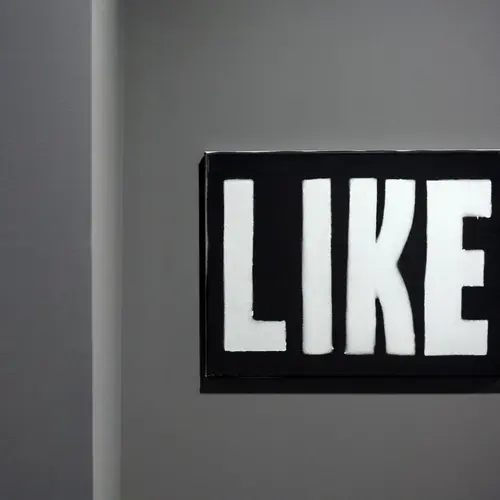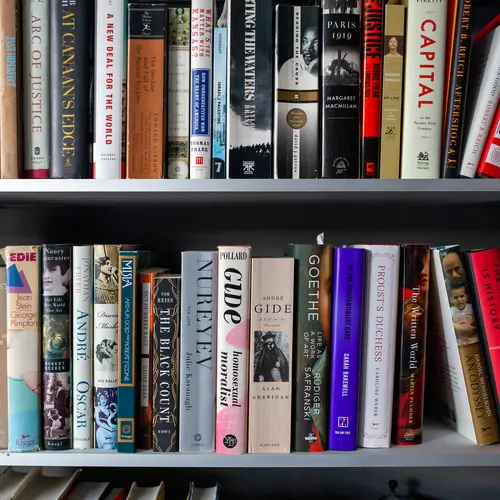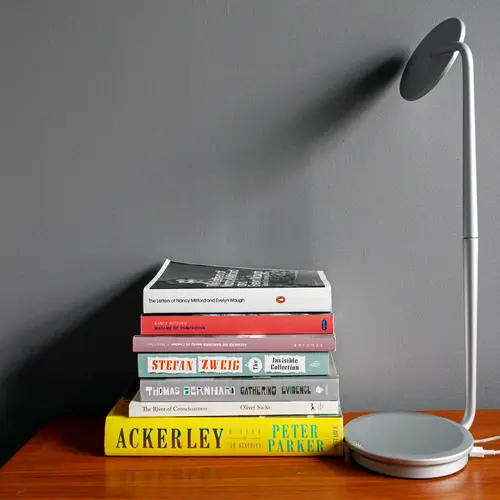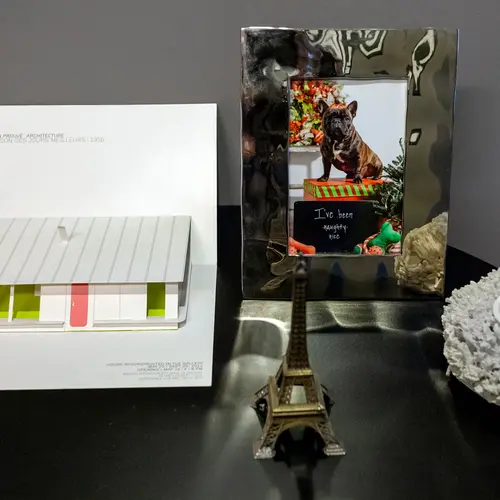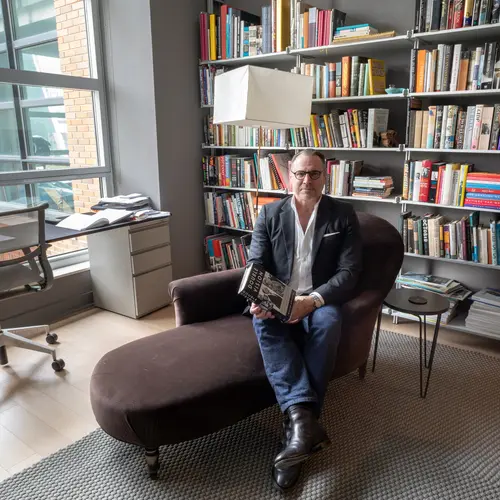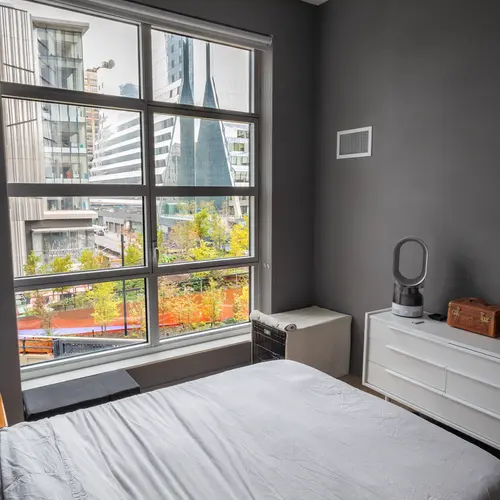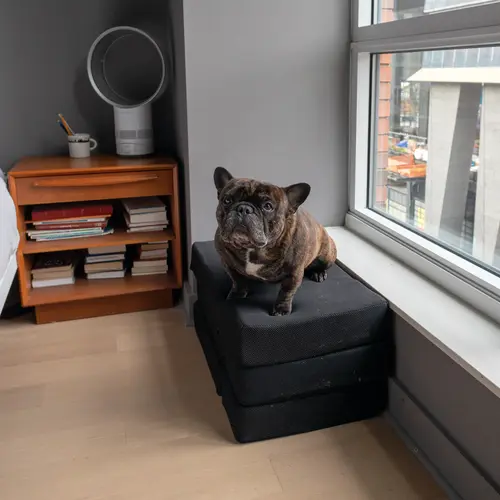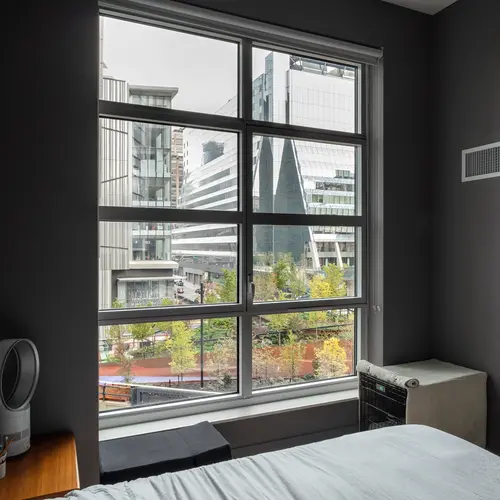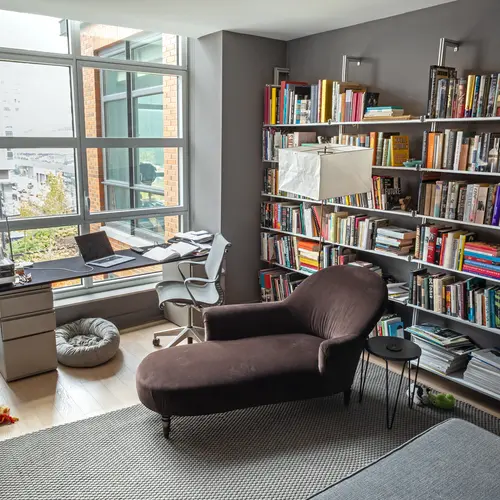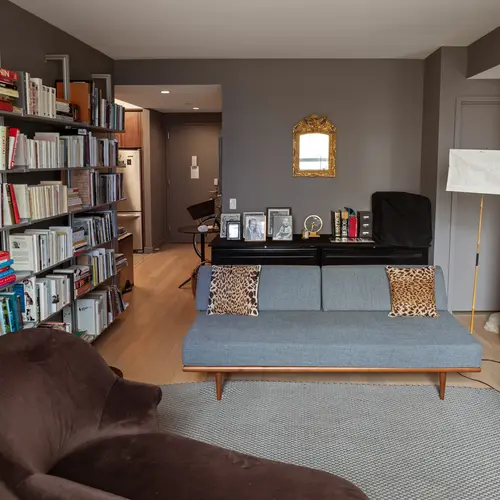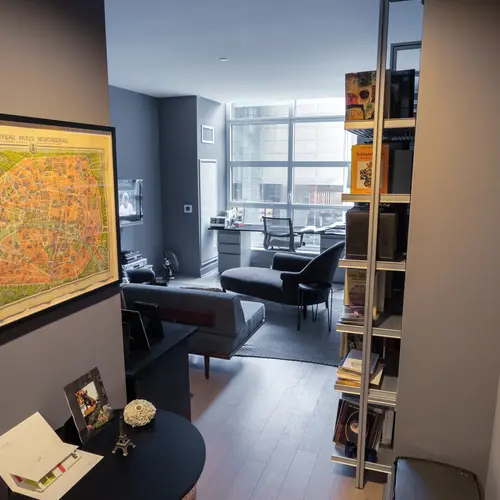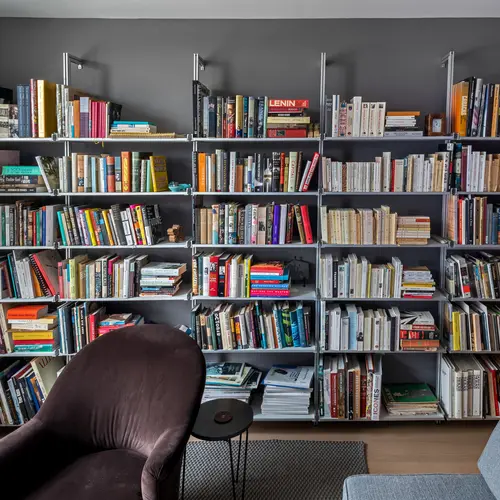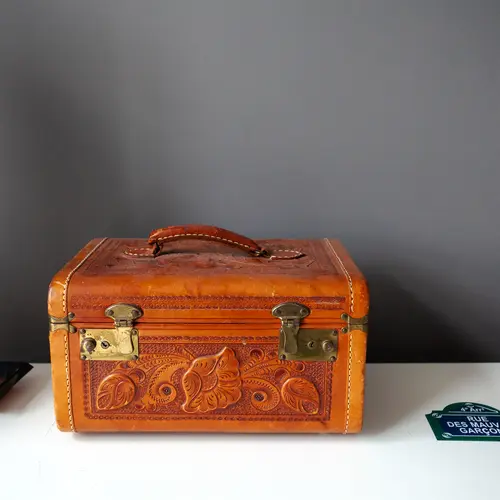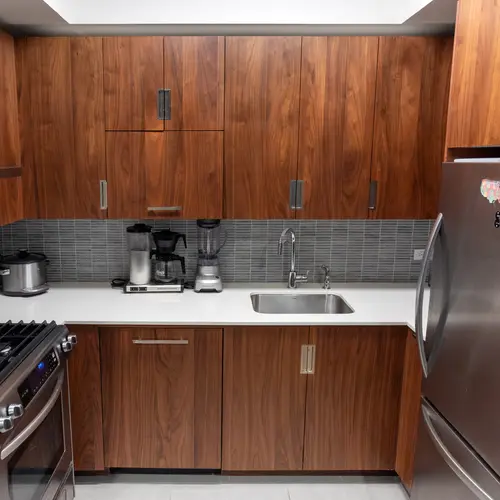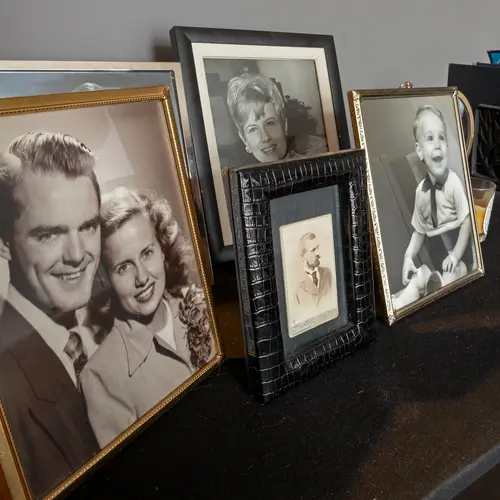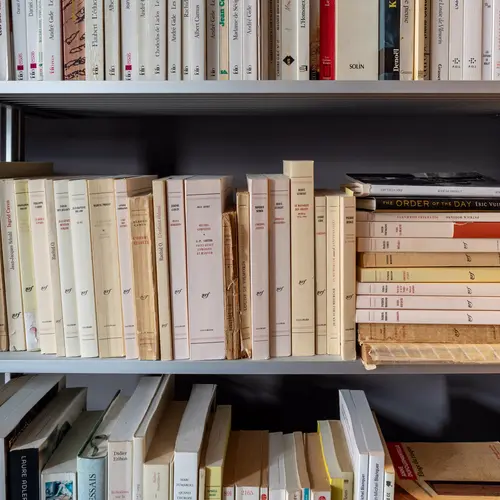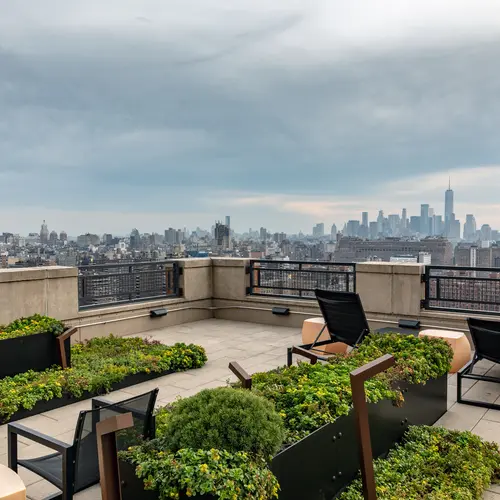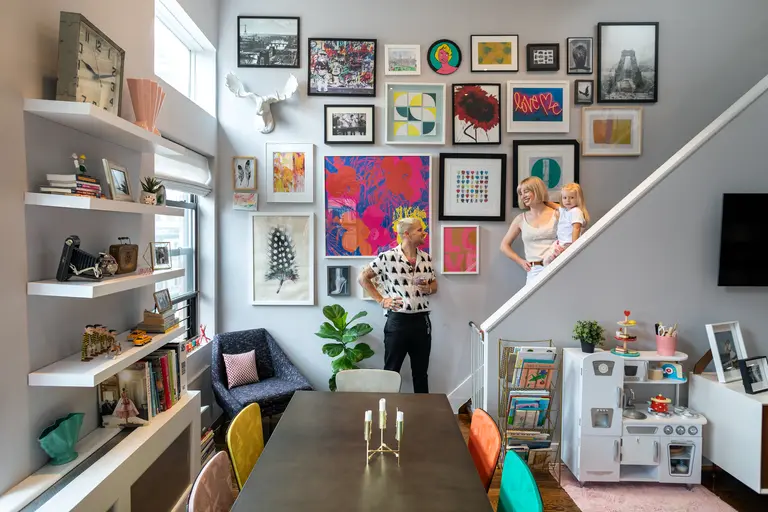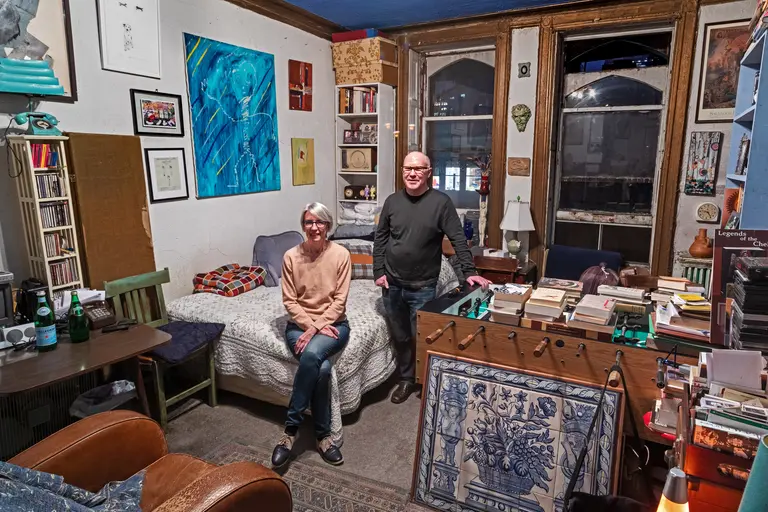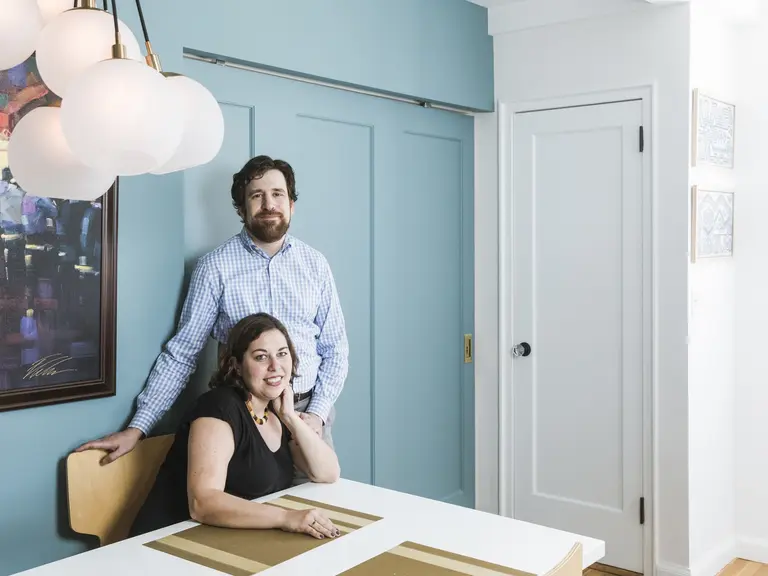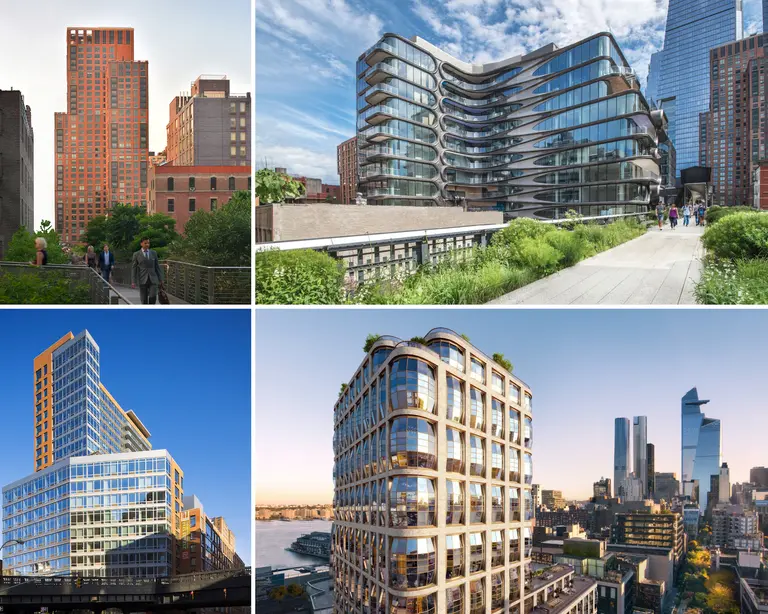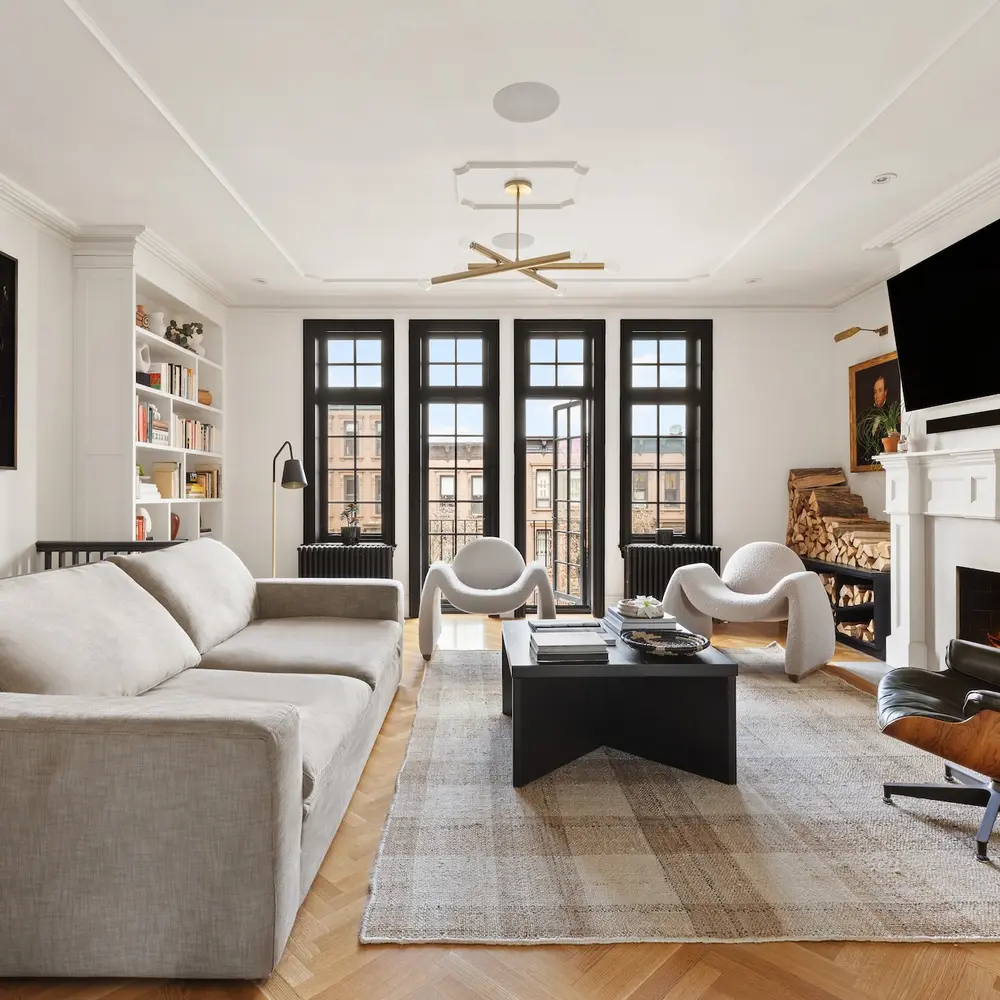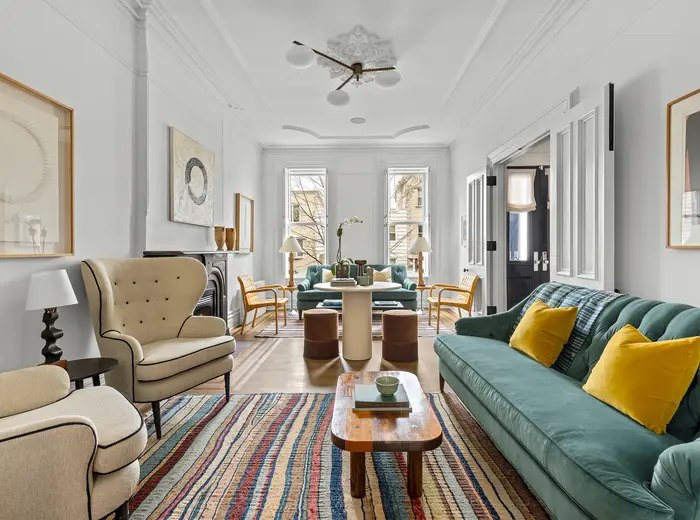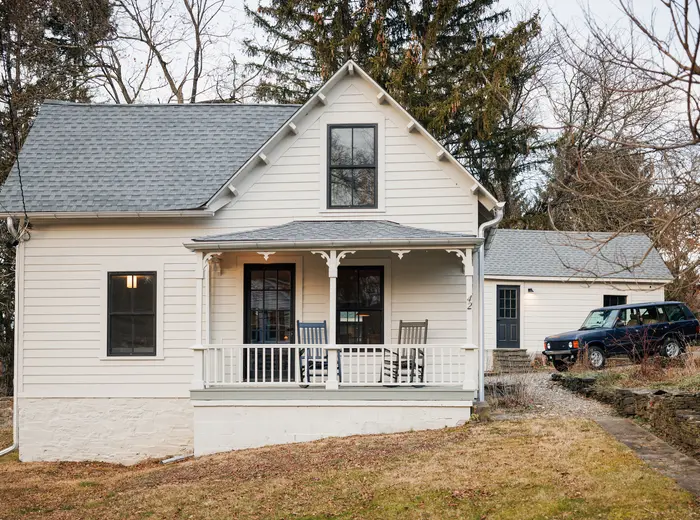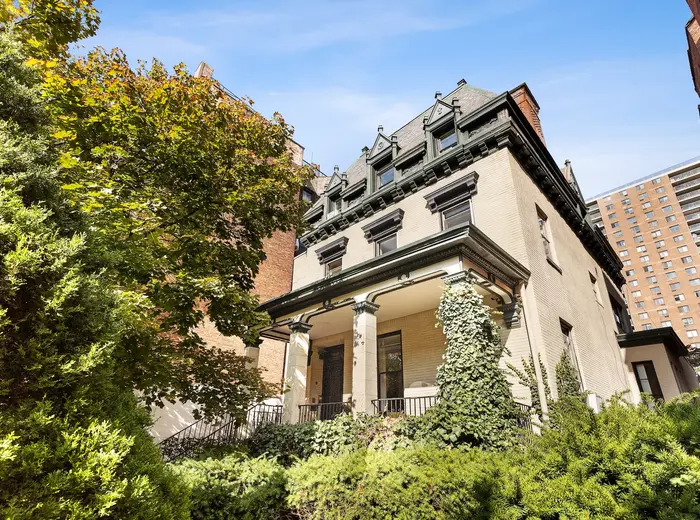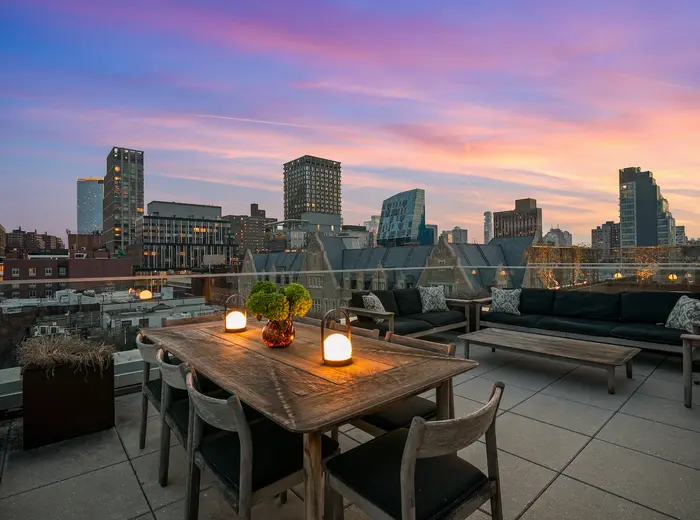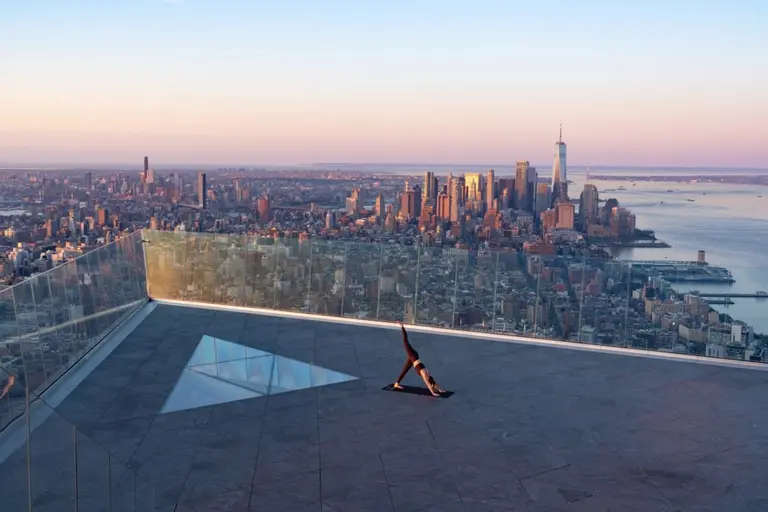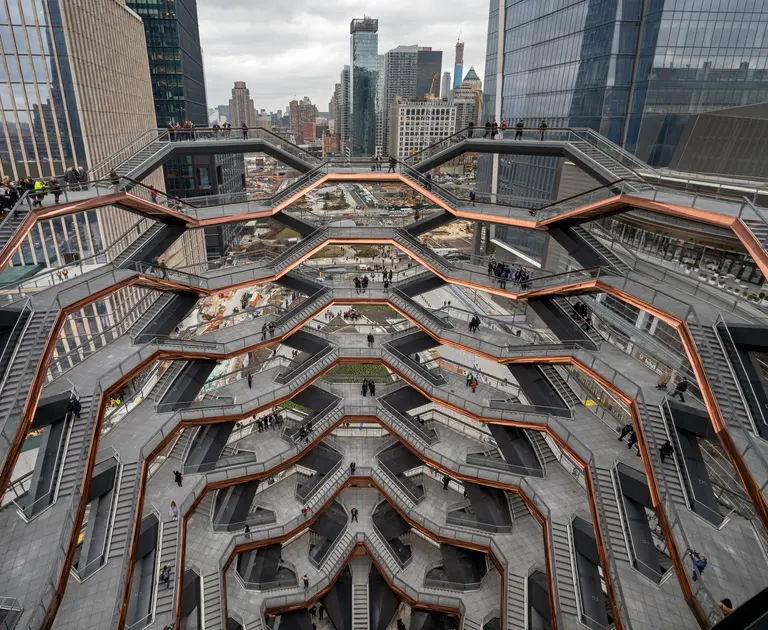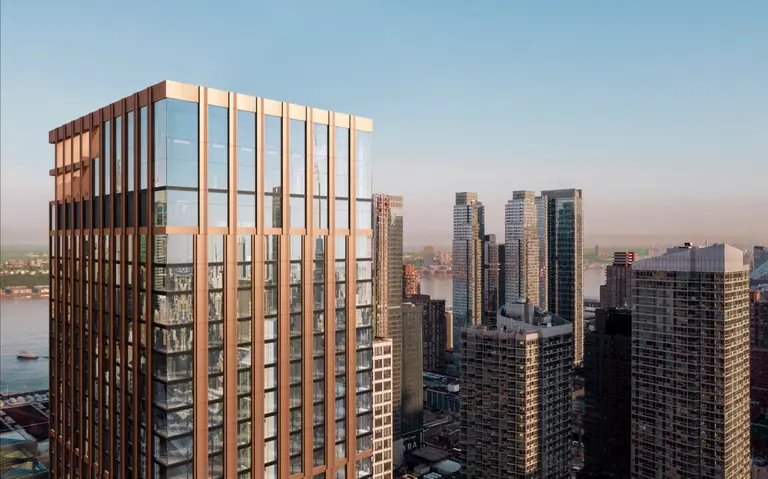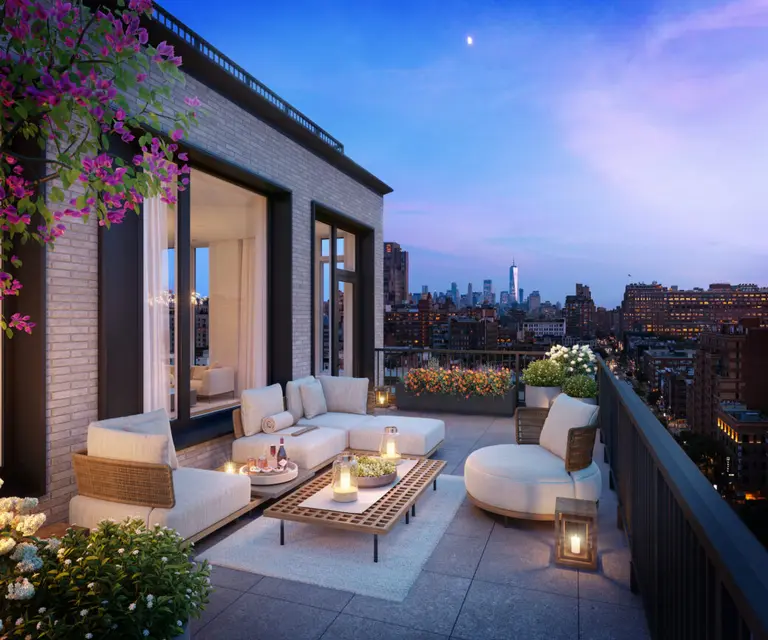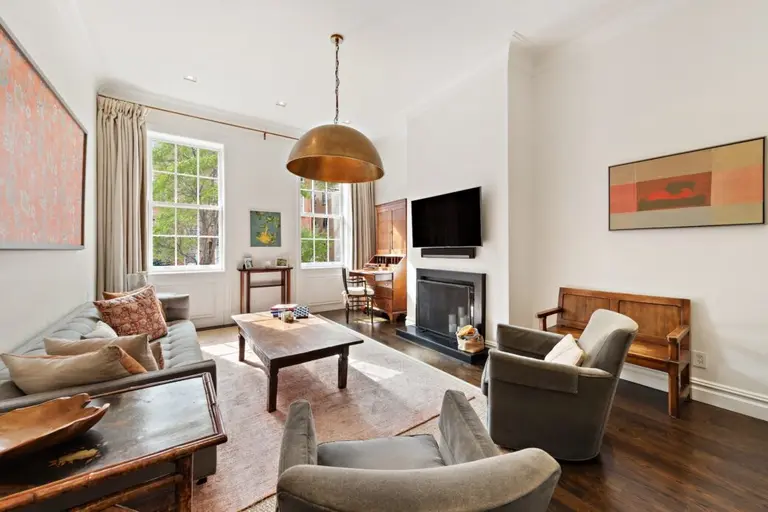My 500sqft: Author William Middleton trades Texas life for High Line views in Related’s Abington House
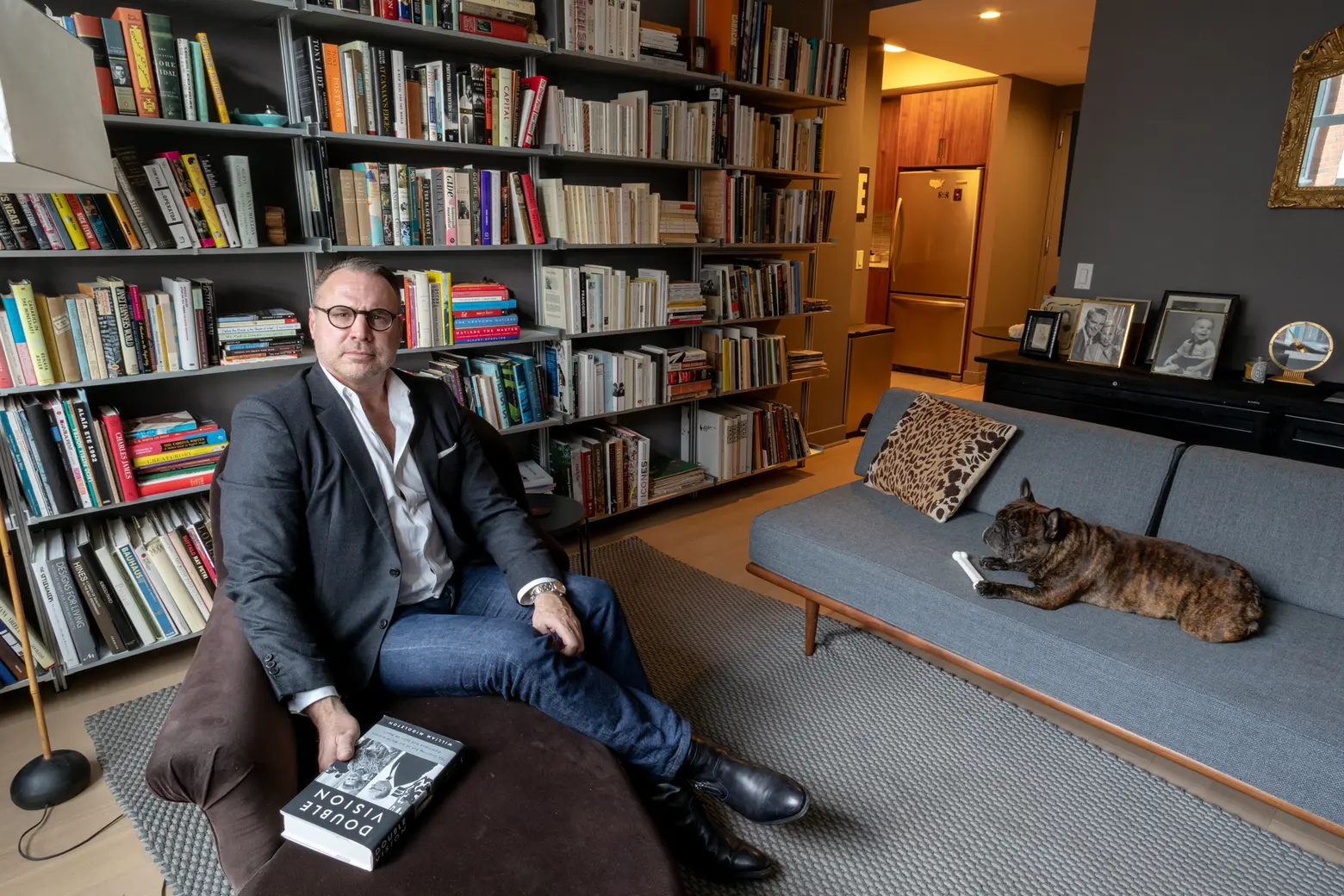
Our series “My sqft” checks out the homes of New Yorkers across all the boroughs. Our latest interior adventure brings us to author William Middleton’s West Chelsea apartment. Want to see your home featured here? Get in touch!
Writer William Middleton is no stranger to cities, having spent five years in NYC, 10 years in Paris, and 10 years in Houston, where he moved to work on the biography “Double Vision,” about French couple Dominique and John de Menil, who transformed the Houston art scene. But after 16 years researching and writing, William knew he wanted to move back to NYC.
A little over a year ago, he moved into Related’s Hudson Yards-adjacent rental Abington House, where his handsome one-bedroom boasts an incredible view right onto the final spur of the High Line. Using his favorite dark gray paint color and a wall of floating bookshelves, William transformed his one-bedroom into a “clean and modern” oasis for himself and his six-year-old French Bulldog, Hubert. Ahead, take a tour of William’s home and hear about his urban experiences, why he chose this building and neighborhood, and what it’s like to have one of the best people-watching perches in all of NYC.
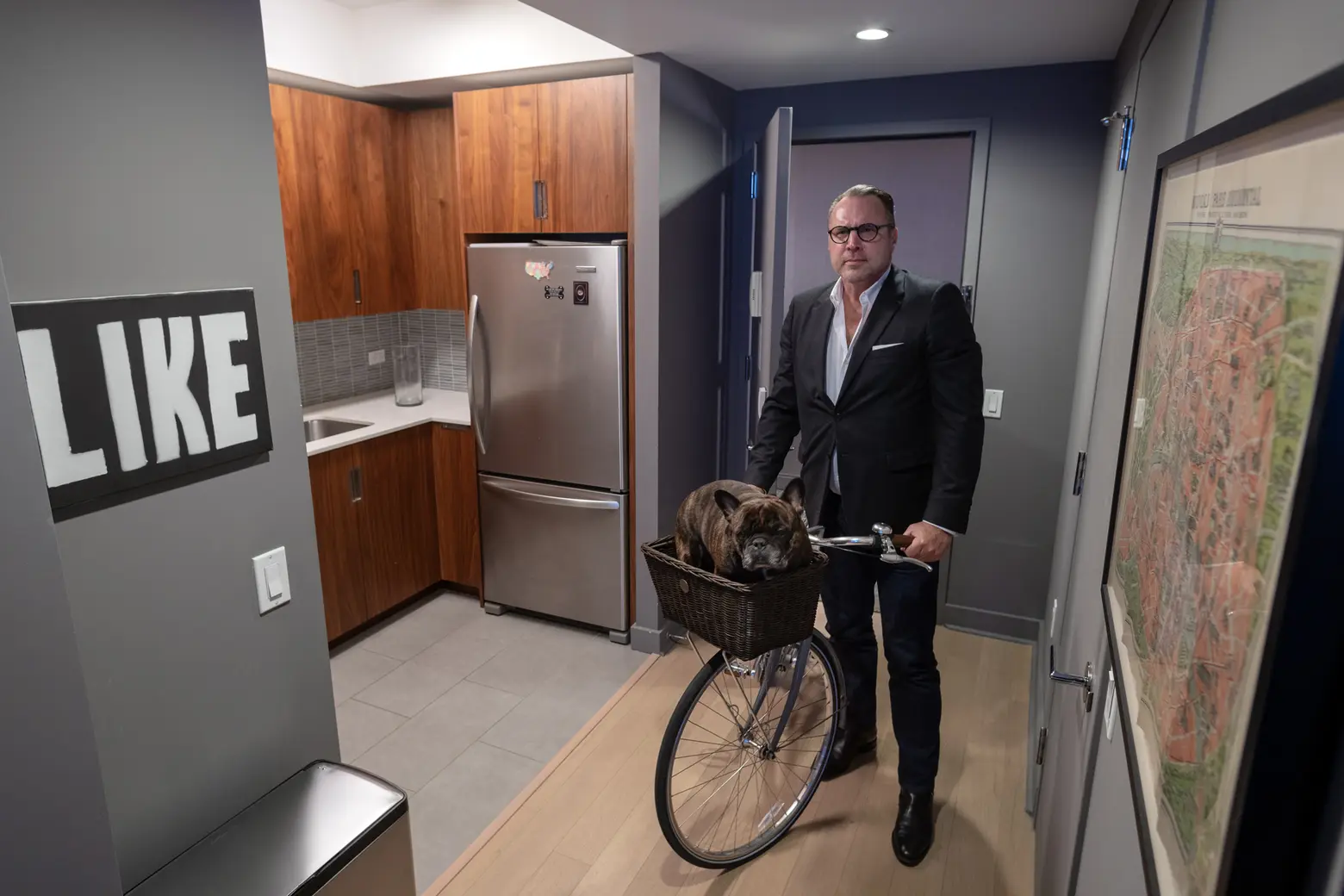 Across from the kitchen is a huge walk-in closet. There’s a hidden dishwasher and microwave and a washer/dryer in the bathroom.
Across from the kitchen is a huge walk-in closet. There’s a hidden dishwasher and microwave and a washer/dryer in the bathroom.
Tell us a bit about your background. Have you always been a writer?
Born and raised in Kansas, I was crazy about reading, starting in the first grade, and have been writing since high school, when I wrote film reviews for my school newspaper. I majored in journalism at college, the University of Kansas, and have worked as a journalist and editor, in New York and Paris, since the 1980s.
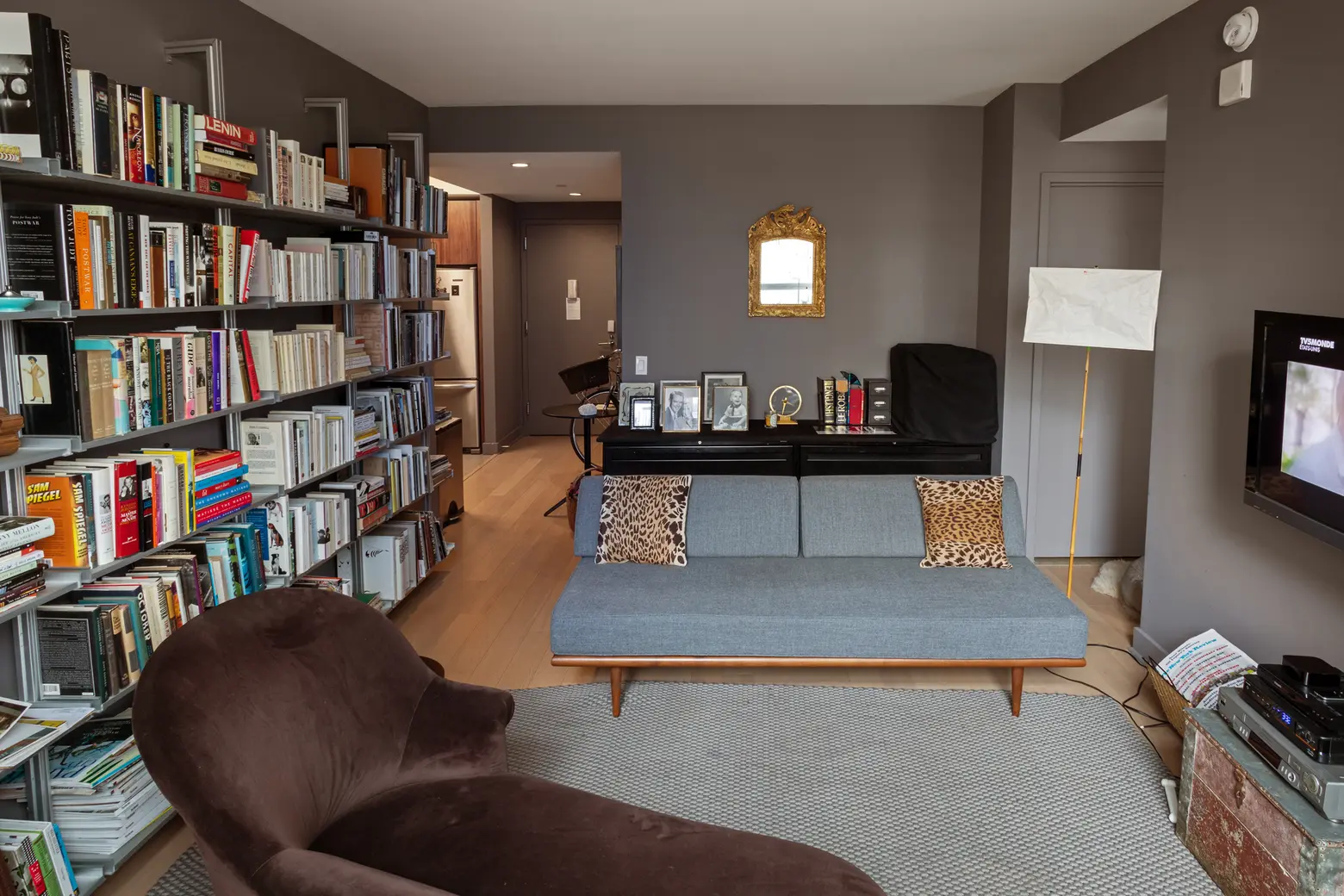
What inspired you to write “Double Vision?”
In the fall of 2000, I had just moved back to New York after living in Paris for 10 years. I knew that there was this French connection in Texas, that this couple, Dominique and John de Menil, had moved to Houston from Paris in the 1940s and built a museum, the Menil Collection and the Rothko Chapel. I went to Houston and saw for the first time just what they had created there. I was astounded. The Menil Collection is one of the great museums in the world, with incredible architecture by Renzo Piano and a remarkable collection of over 10,000 works of art; the Rothko Chapel is one of the most important artistic and spiritual achievements of the 20th century; and all of the de Menils’ contributions to their adopted city—also including the Cy Twombly Gallery, the Byzantine Fresco Chapel, and their house designed by Philip Johnson and Charles James—are all so impressive and inspiring. Dominique de Menil had died three years before and no one had committed to writing a biography, so I decided to try. It would be my first book—I had no idea it was the beginning of a process that would take 16 years before it was finally out in the world.
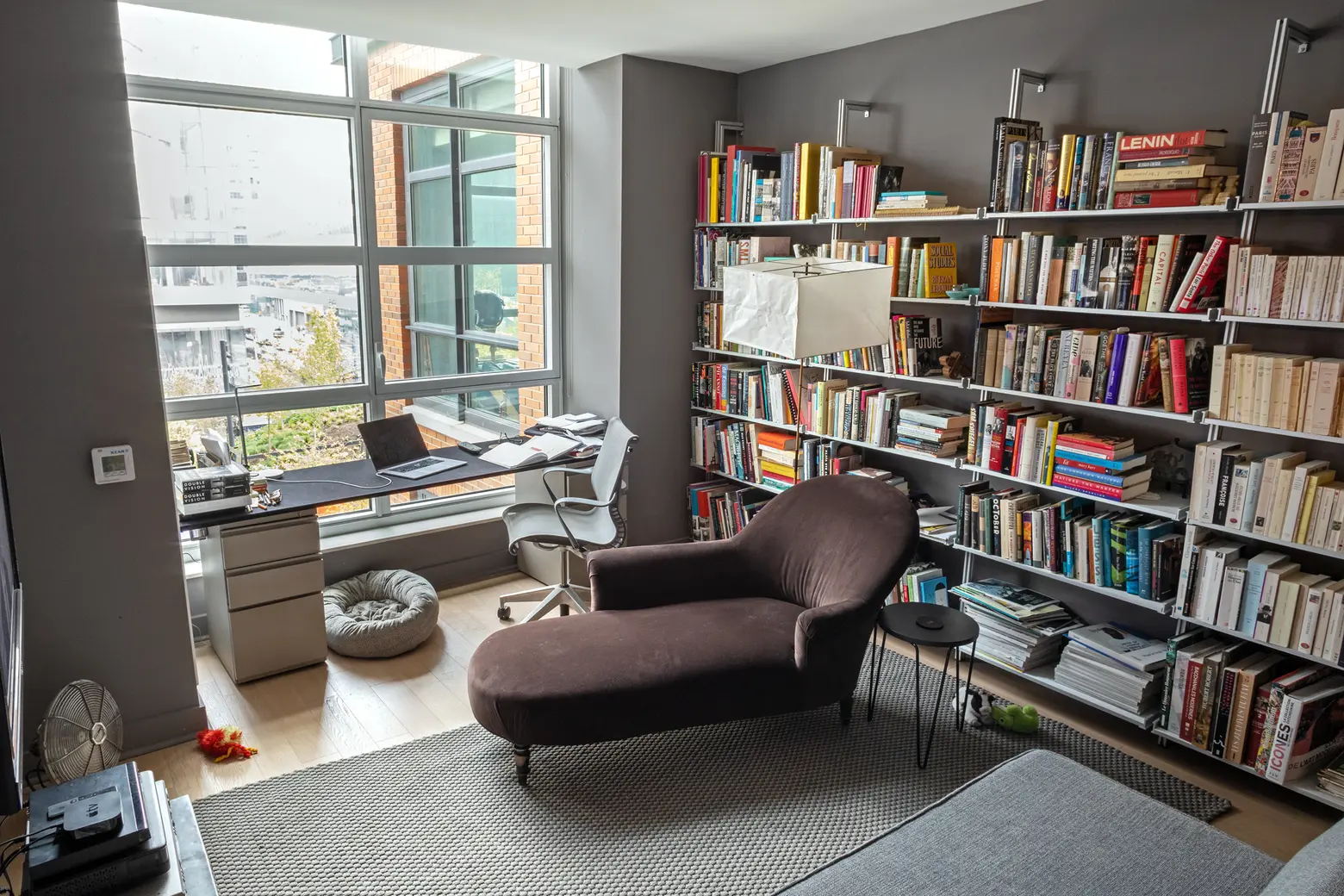
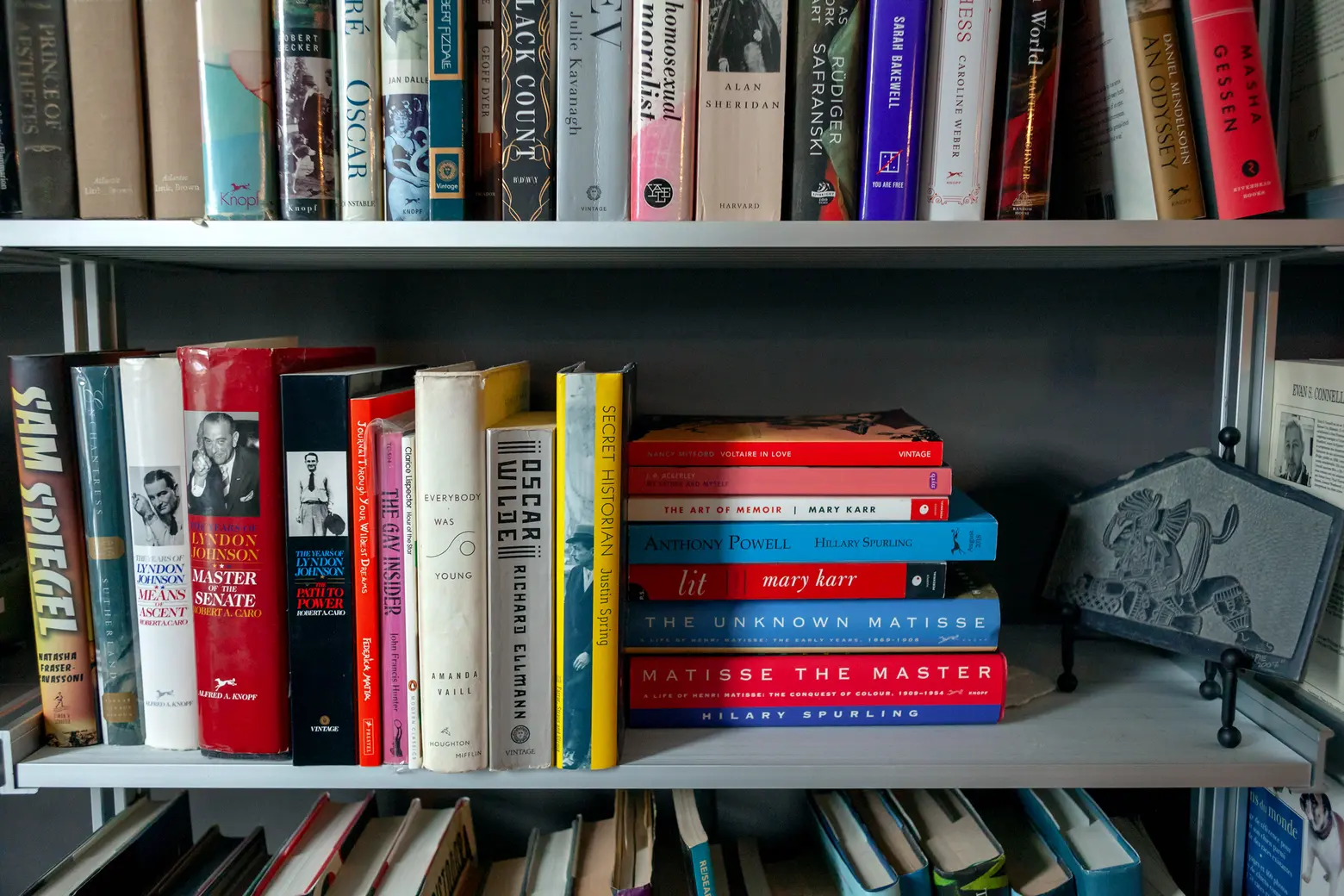 The shelves are made out of aluminum, so they’re lightweight and easy to pick up and move.
The shelves are made out of aluminum, so they’re lightweight and easy to pick up and move.
Was it an adjustment moving to Houston after spending much of your adult life in Paris and NYC?
Having grown up in Kansas, not too far from Texas, the area was certainly familiar to me. I had lived in Dallas one summer during college so I had experienced the state. But Houston is very different from other places in Texas—both very southern and very international —and it was certainly completely different from New York or Paris. I had not owned a car for 20 years, for example. I tried to make it down there riding my bike around town but only lasted two, long hot summers.
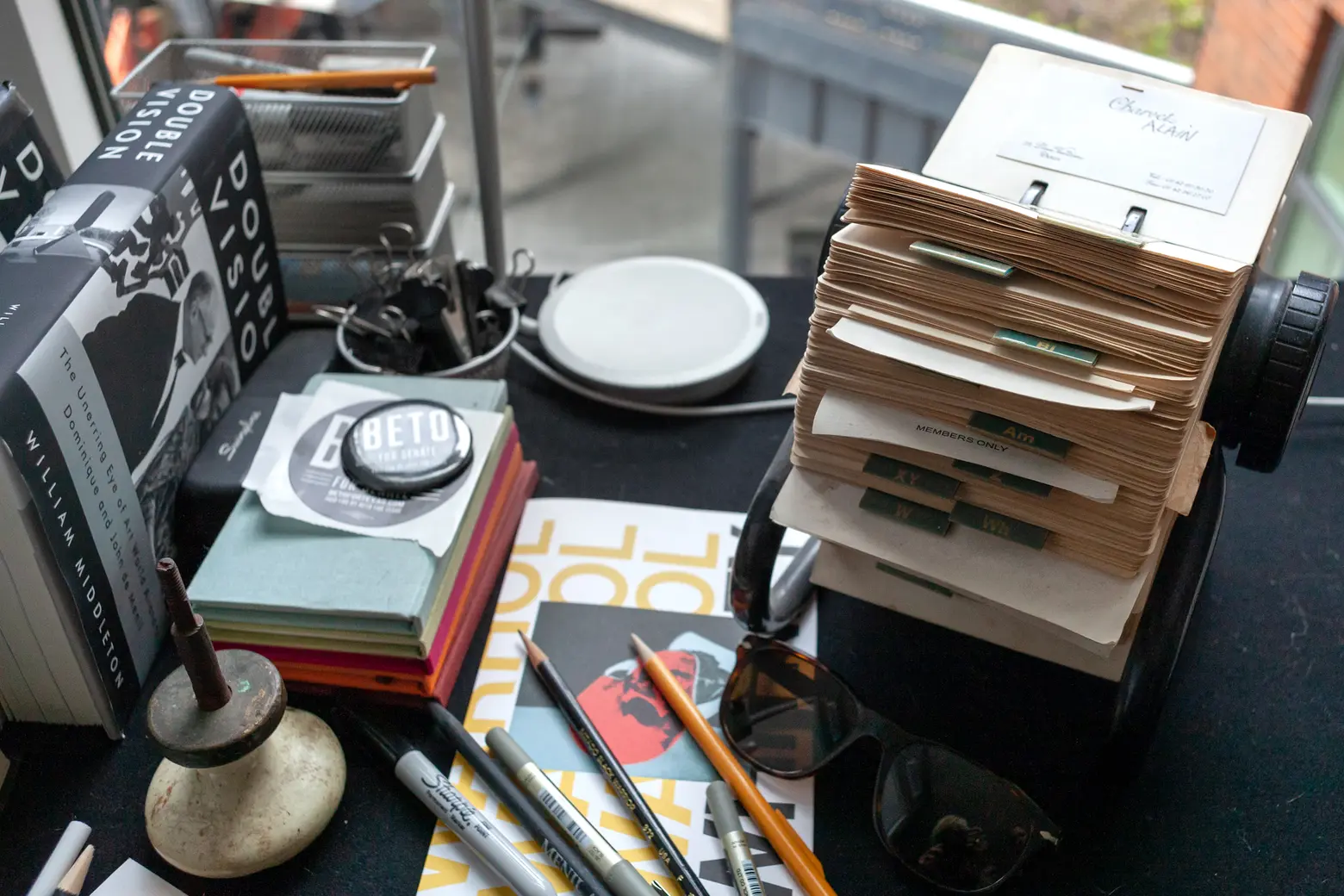
Do you miss anything about Texas?
Well, first the amount of space. Houston is a big, sprawling city with a web of massive highways and wide open skies. There is a thrill that comes from that. And the scale of living is also huge—I think my entire New York apartment could fit inside the living room of my place in Houston!
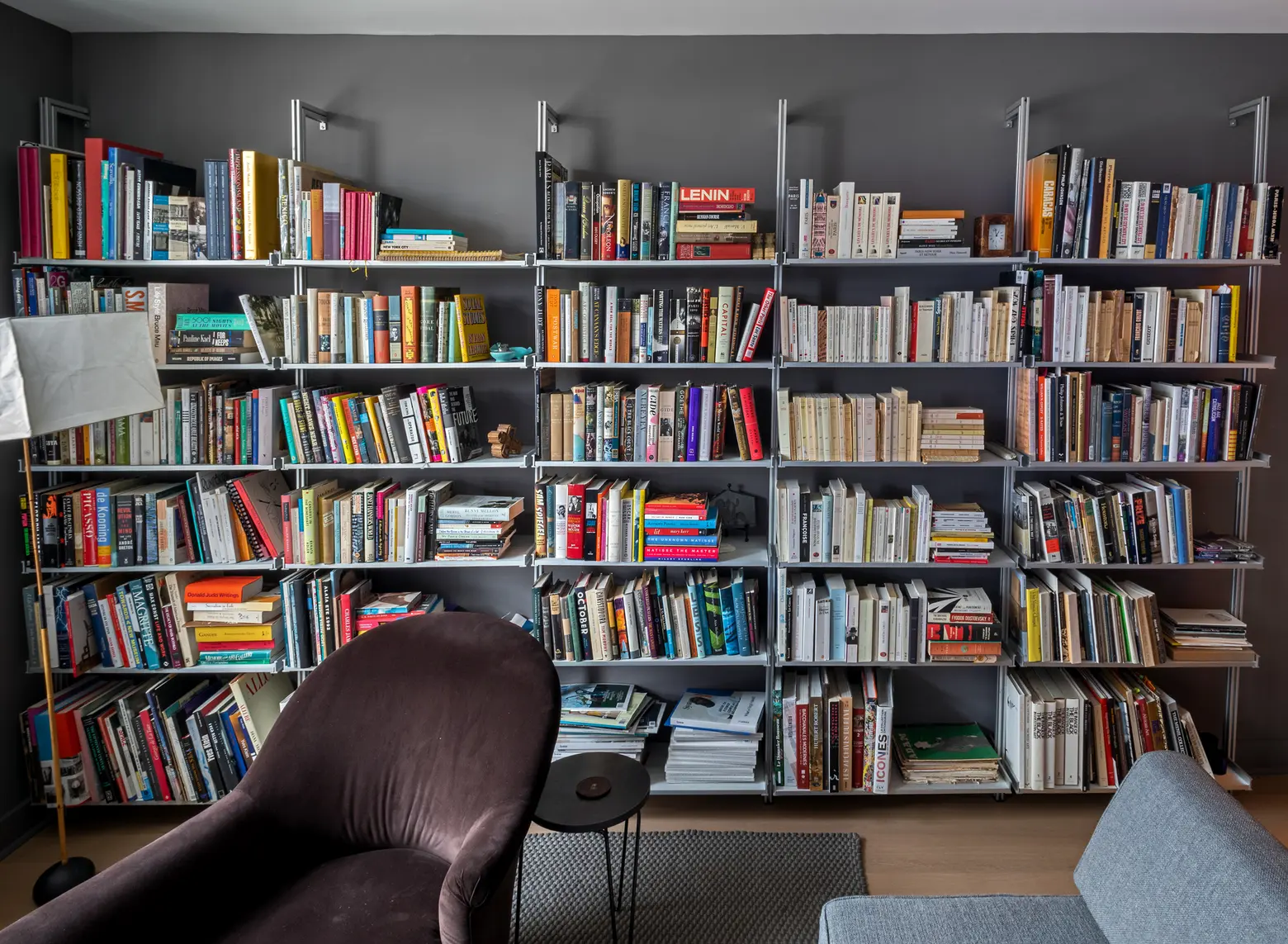
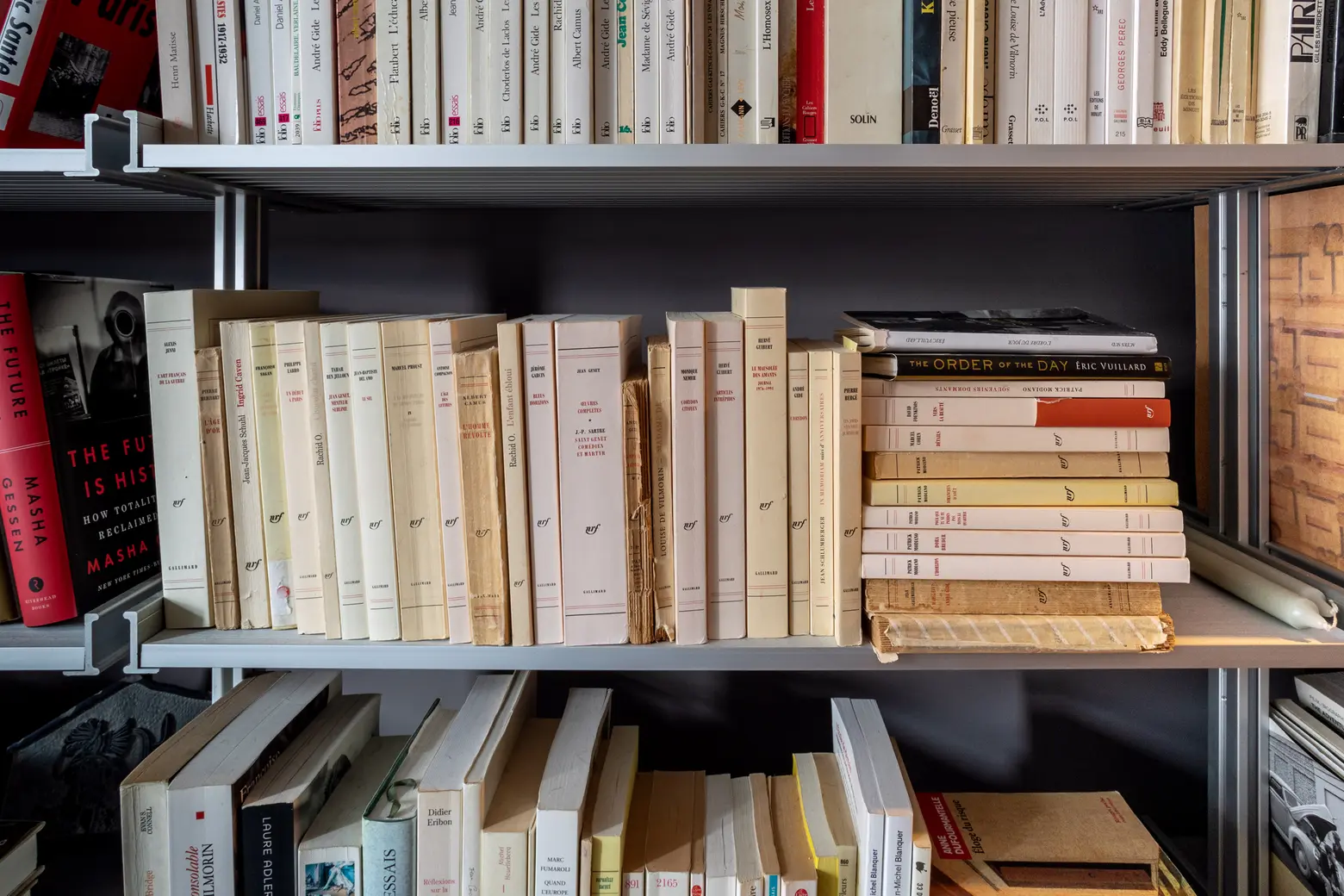 William estimates that he has more than 2,000 books
William estimates that he has more than 2,000 books
Did you always know you’d come back to NYC when the book was finished?
Everything about working on the book was new for me. But it became clear that once the research and writing was finished—and the process of editing, fact-checking, copy editing, and image selection was about to begin—that I needed to be back in New York.
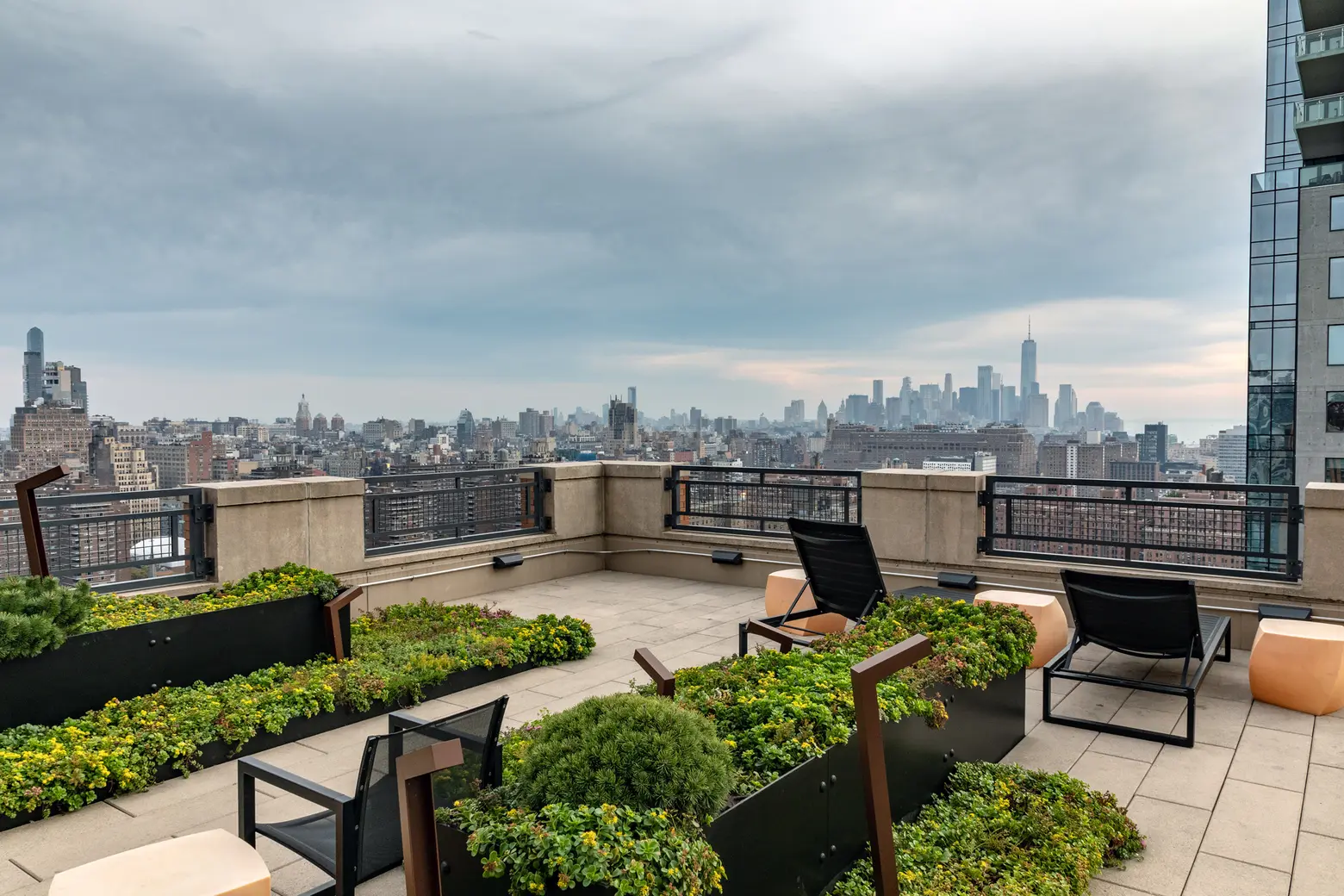
Abington House’s roof deck and views
Why did you decide on Abington House?
I knew Chelsea well because my last two apartments had been in London Terrace, just a few blocks away. I have two friends who live in Abington House who had done a lot of research before they made their moves. The building is designed by Robert A.M. Stern, which is already quite impressive. Both of my friends raved about developer Related, suggesting that because Related Companies is developing Hudson Yards, one of the biggest construction projects in history, that it was wise to go with a team so committed to the neighborhood.
Then, when I visited the building and had a better sense of the amenities, I was blown away. The apartments all have washers and dryers, dishwashers, microwaves, central air, and expansive windows. The building has a fitness center designed by Equinox. There is a doggie daycare in the building called Dog City. It was an awesome, easy way to return to New York and concentrate on finishing the book.
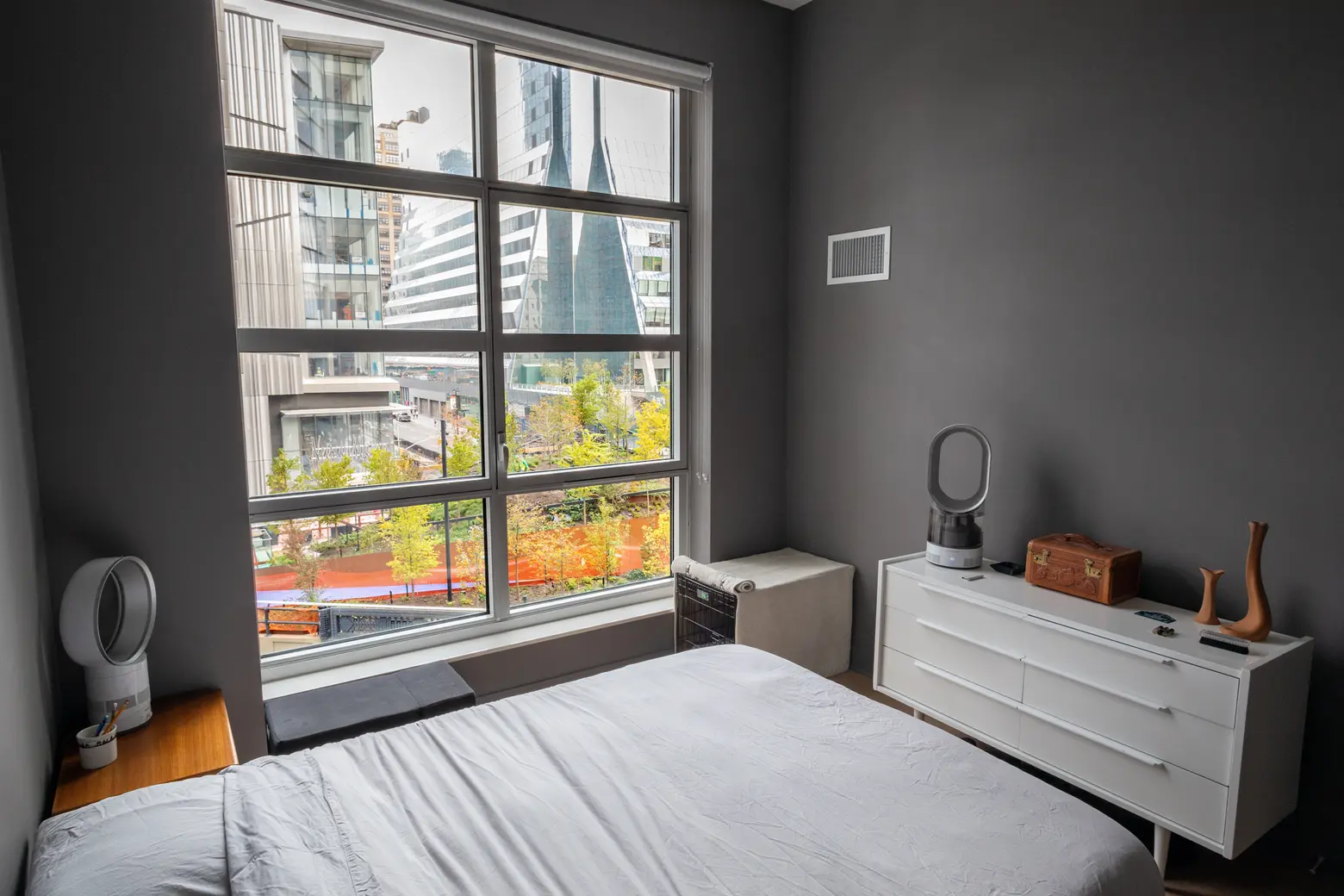
I know you’ve only been in the apartment for a little over a year, but how has your view of the High Line changed since you first moved in?
When I first visited the apartment in April 2017, I noticed the nice view out over 30th Street and onto the entrance of 10 Hudson Yards. But I did not really focus on what else was happening. By the time I moved in, in June 2017, I realized that I had a fantastic view of the construction of the last section of the High Line: the 10th Avenue Spur. So, I have seen the building of a huge embankment, trees, bushes, and plantings lifted into the air and placed in the ground by landscapers, and seen walkways, stairways, and viewing platforms created on the old train tracks. It has been amazing to watch it all come together. I can’t wait until next Spring when everything opens: the High Line, the new José Andrés food hall, The Shed, The Vessel, the retail and dining, and everything else.
What’s the craziest thing you’ve seen out your window?
Well, I guess the wildest thing has been seeing flatbed trucks filled with trees lifted by cranes several stories up in the air and deposited into place. When the rest of Hudson Yards opens and fills with new people, that is probably when the crazier things will happen (or will it be their view of us that will be wild?).
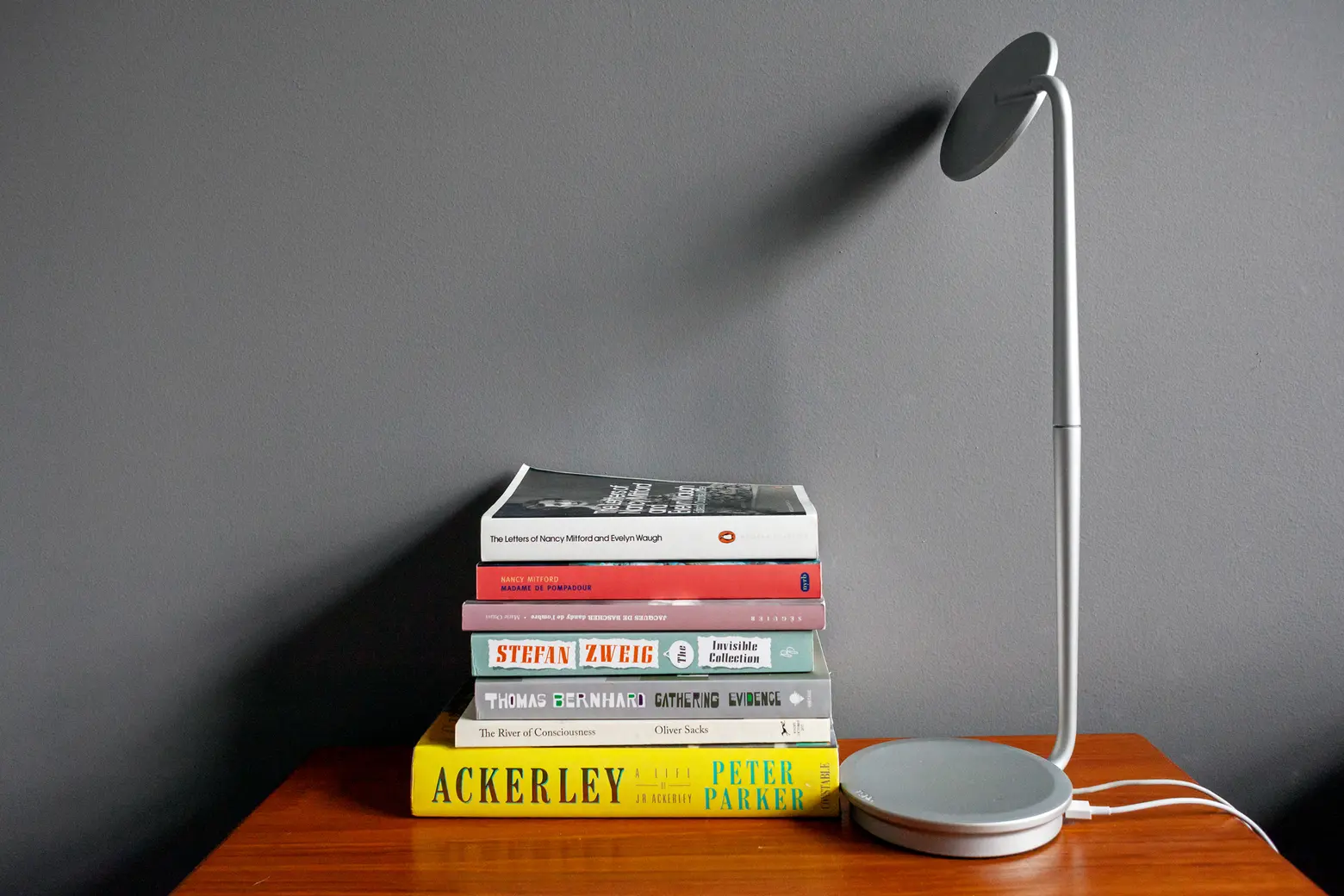
Favorite spots in the neighborhood?
Bottino, an Italian restaurant on 10th Avenue, is such a great place for dinner—has been for decades—and Cookshop is also great for lunch or dinner. All of the galleries in West Chelsea, between 10th and 11th Avenues and 17th and 29th Streets, make for one of the great concentrations of art in the world. 192 Books on 10th Avenue is one of my favorite bookstores in the city. There is a little-known Starbucks tucked in between art galleries on 26th Street, between 10th and 11th, that is great. All of the bike paths and parks along the Hudson have turned out to be so beautiful—though dogs are not allowed in any of the plantings and, the tiny, concrete-covered dog park at 23rd Street is puzzling for my dog, used to vast expanses of grass in Texas. He’s not quite sure what to do there—ha!
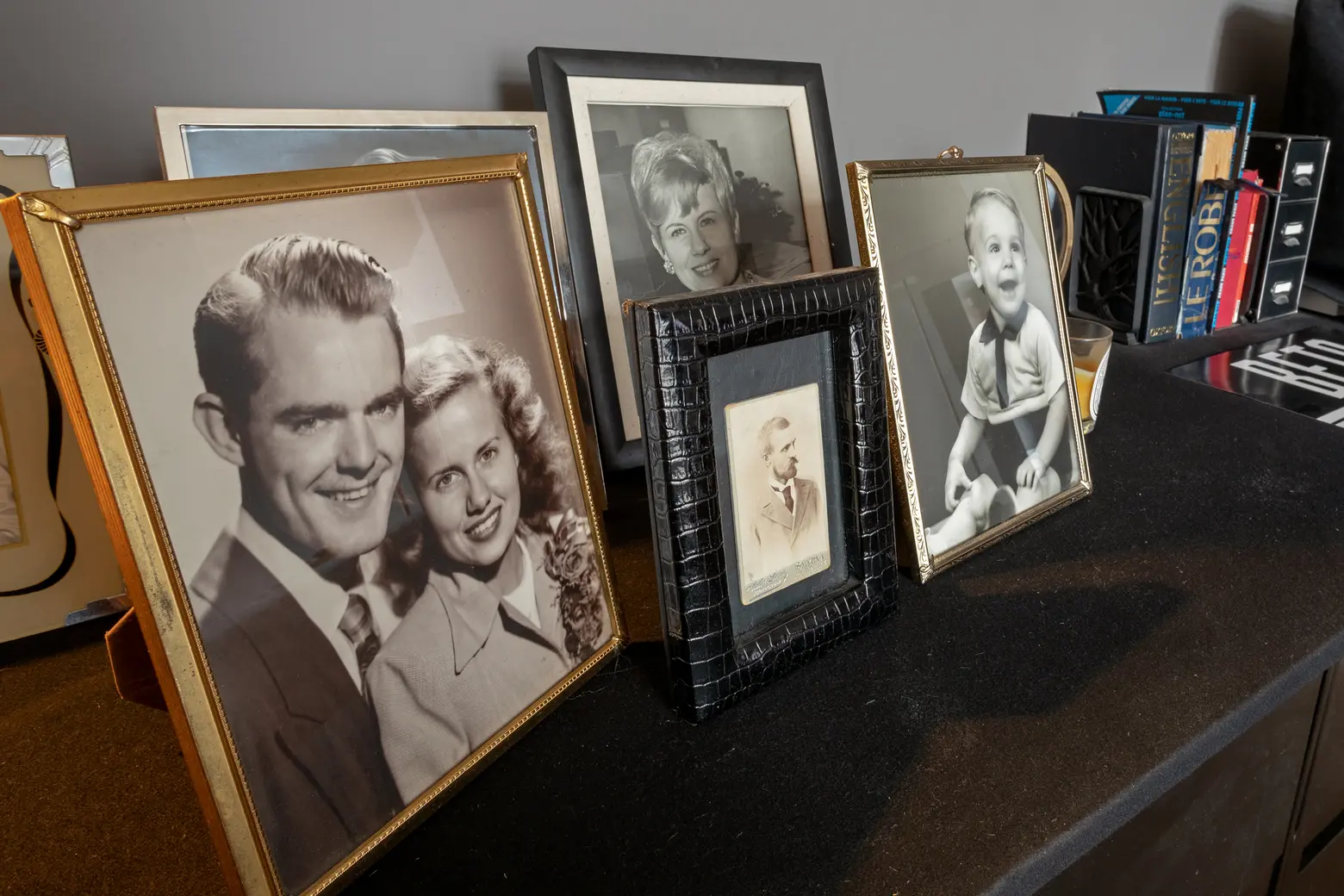
How would you describe your design style?
I like to keep things fairly simple, with a mix of mid-century modern and more historic pieces. So I have a George Nelson daybed, modern Knoll stools, a pair of Noguchi floor lamps, and a 19th-century French lounge chair, in brown velvet, that I picked up many years ago at a flea market in Paris. There is a mid-century “mystery clock” that sits under a gilded, 18th-century French mirror. My desk top is a really simple idea I stole from the subject of my book, Dominique de Menil: two filing cabinets topped with a piece of wood, covered with felt (mine is billiard felt, in black, and was beautifully done by an upholsterer in Houston).
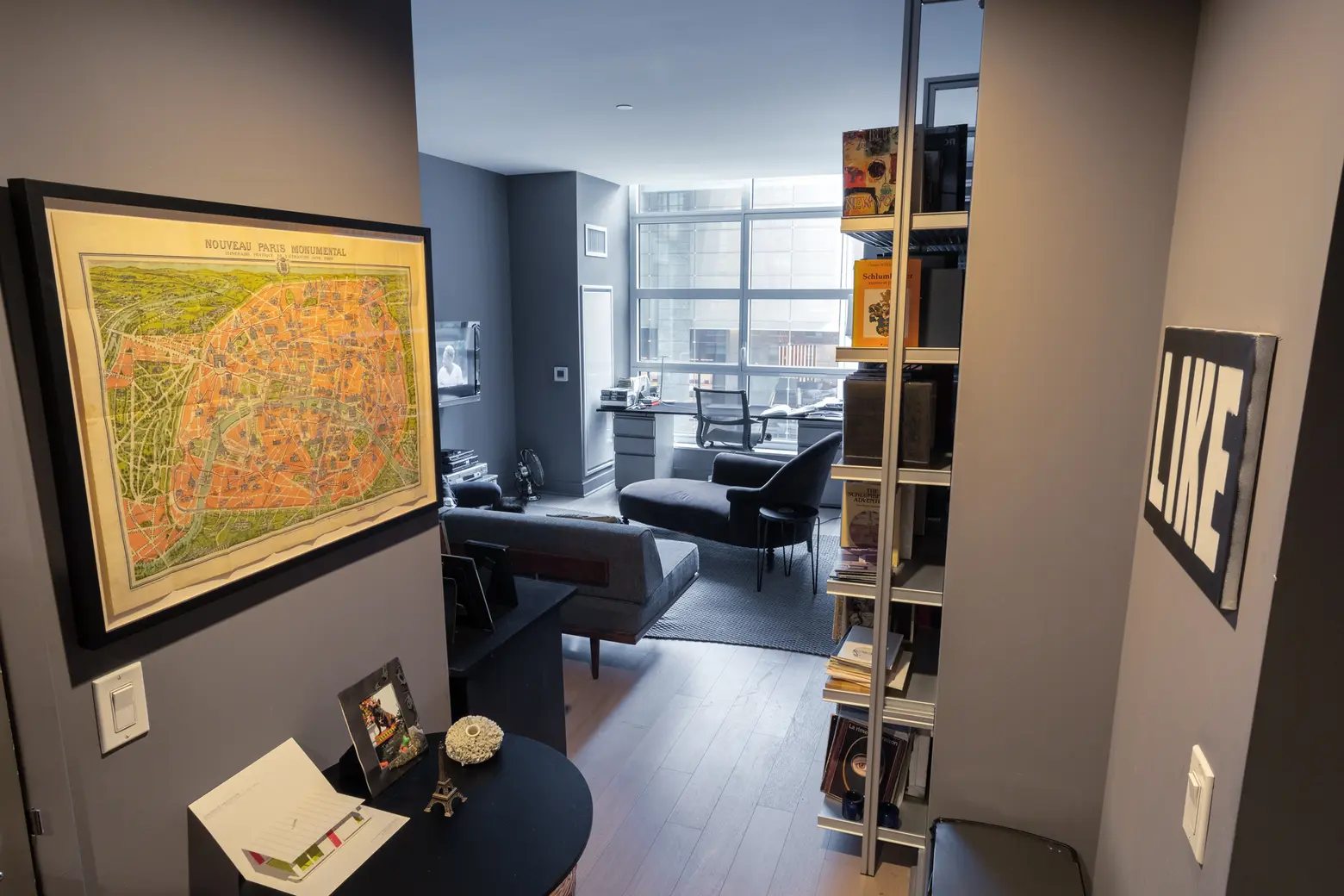
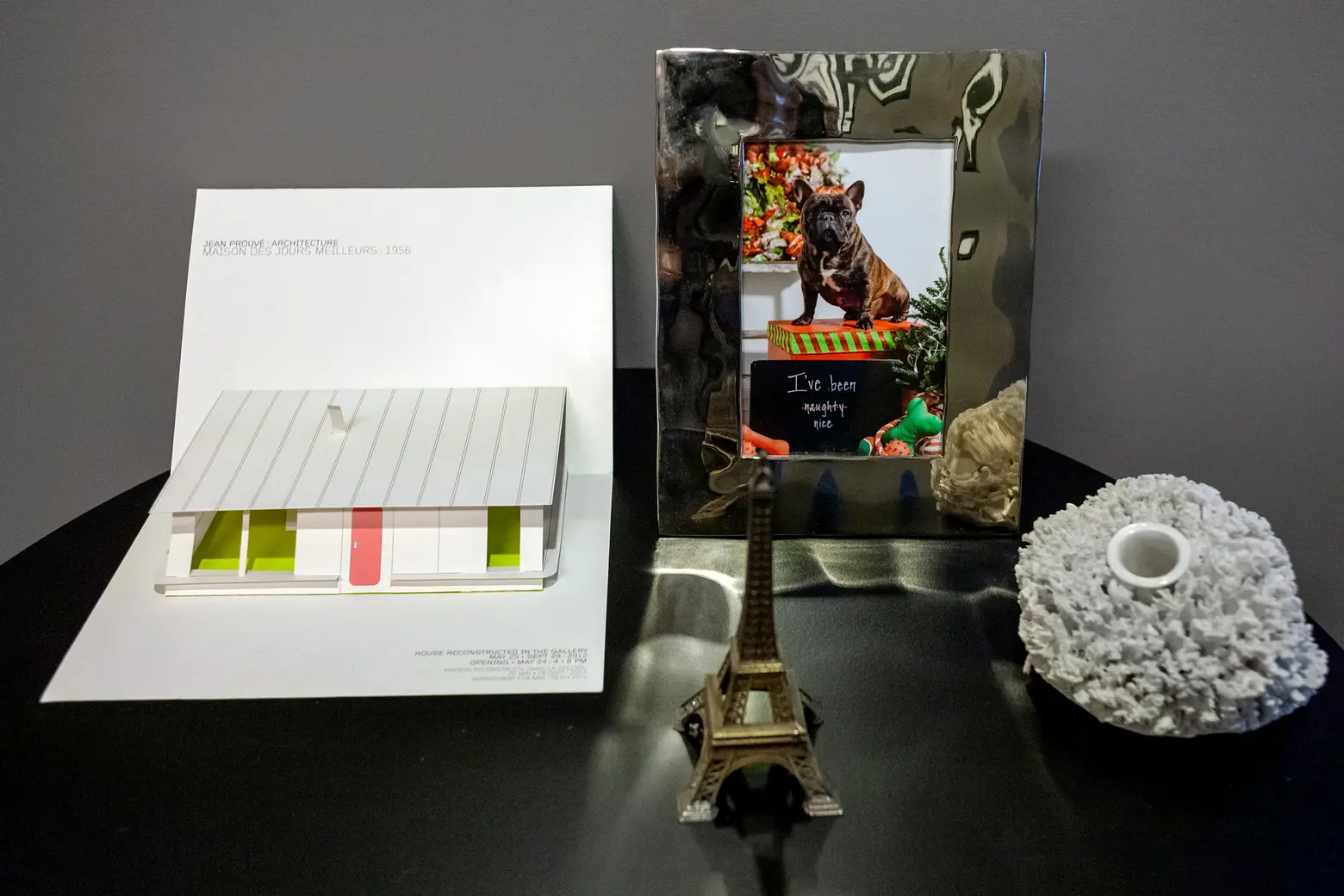
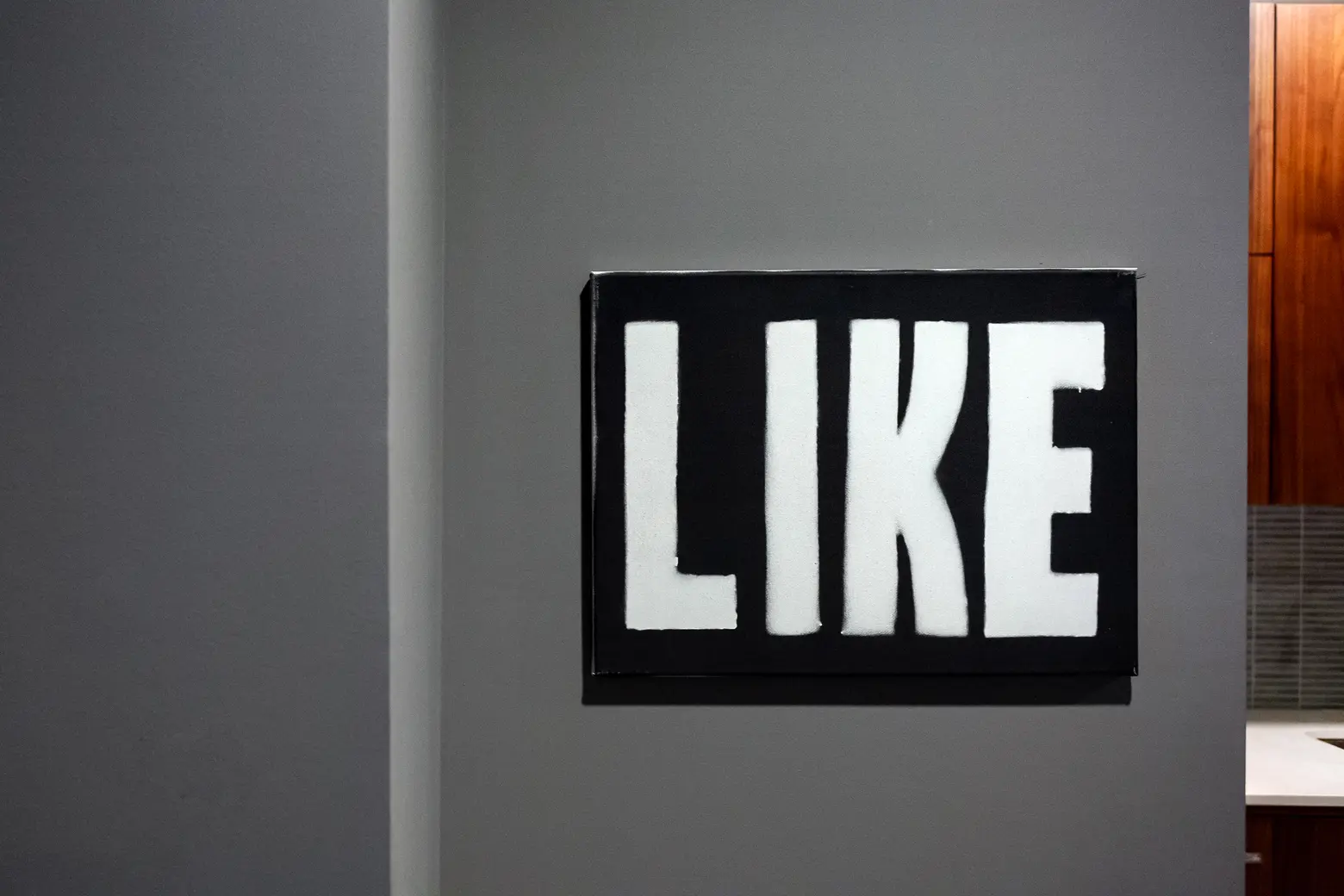 Top: The framed Paris map; Bottom: Mark Flood’s “like” piece
Top: The framed Paris map; Bottom: Mark Flood’s “like” piece
Do you have a favorite piece of art or furniture?
Because books are so important to me—for work and for life—one of the most important pieces is my bookcases. They are done by a California company called Modern Shelving and were first made for my place in Texas. There, they were designed to cover an entire wall. Here, in a smaller space, I lost three sections and had to reduce the number of books, but they work perfectly.
Another favorite piece is a pair of leopard print pillows by India Mahdavi, a Paris designer. I also love the gilded frame mirror, Louis XV, particularly because it was a gift to my parents for their 50th wedding anniversary (although both have since died, they were married for 61 years, so that is a lovely memory). I also really like two pictures that I have on the walls. One is a framed map of Paris from just before World War I, showing the monuments around the city. The other is a “like painting” by Houston artist Mark Flood, considered one of the most exciting contemporary artists based in Texas. It’s a small silkscreen, in black and white, given to me by the artist during a tour of his studio.
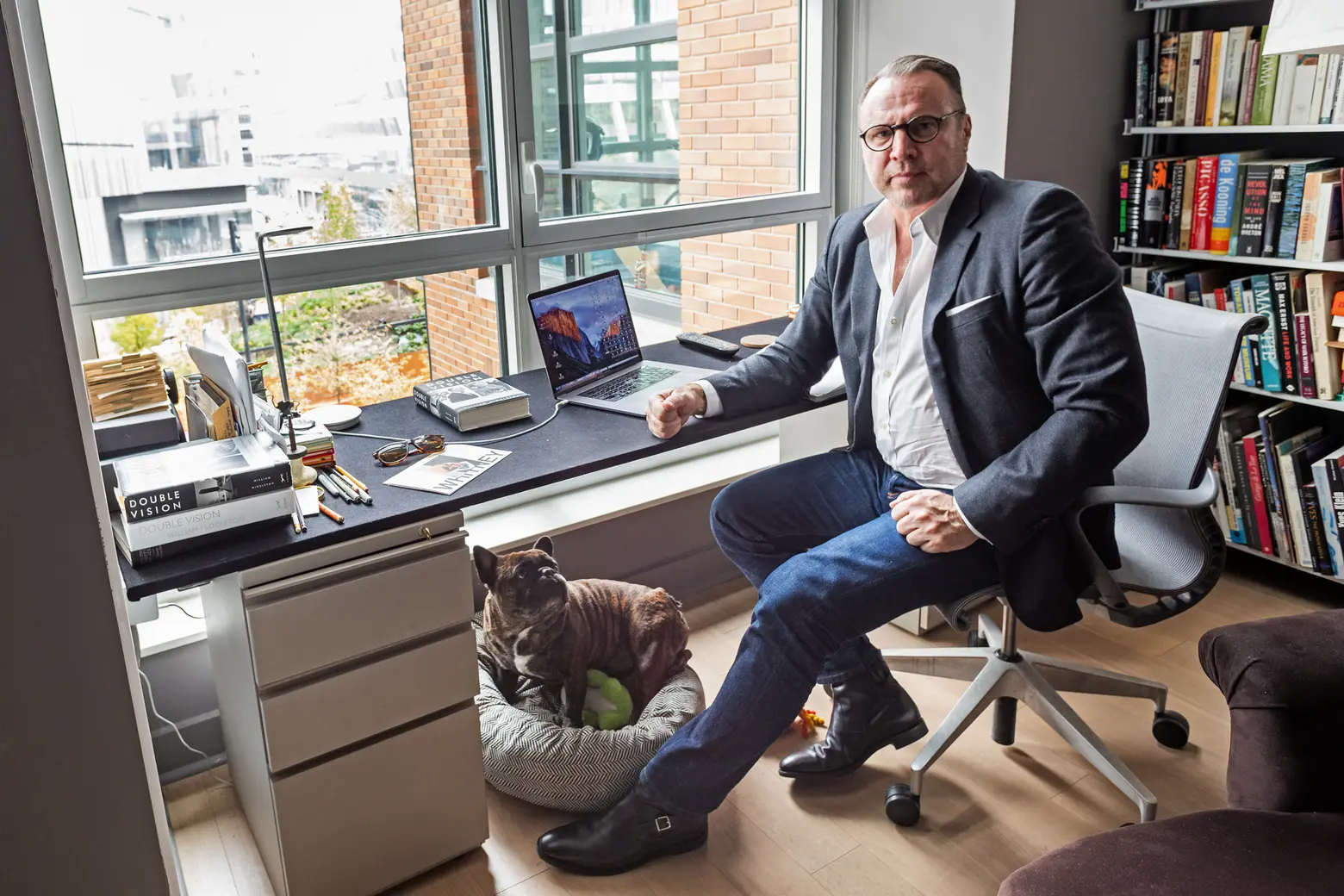
You spend a lot of time working from home. What were some of the design decisions you made based on this?
Well, one of my friends in the building had to help me with this: cutting two feet off of the desk top and the credenza and moving the desk into the window (I initially had it back by the hallway to the bedroom). It is a much better use of space. And having the bookcases as the dominant feature of the living room—it was because I like them but I also wanted to have everything close at hand.
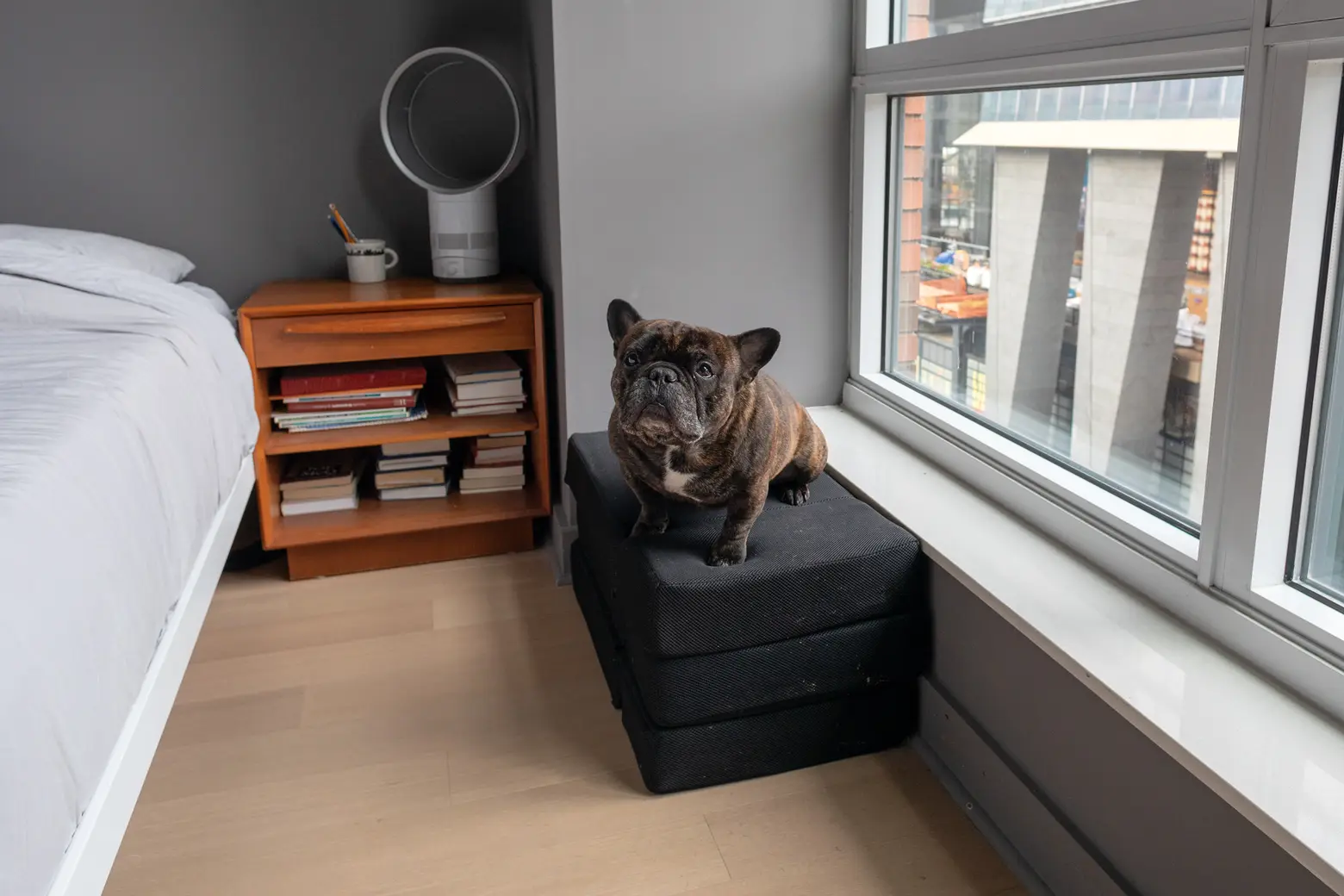
What are Hubert’s favorite spots in the apartment?
I would say anyplace where he is getting attention and treats—ha! He has a round doughnut bed under my desk. Often, in the morning, I put it on top of my desk and lift him up there. He loves looking out the window, watching all of the activity on the High Line. He also has a window seat in the bedroom—that is another good spot for him. And, because it is not good for French Bulldogs to do much jumping, he has a little set of stairs to the bed that he seems to love scampering up and down.
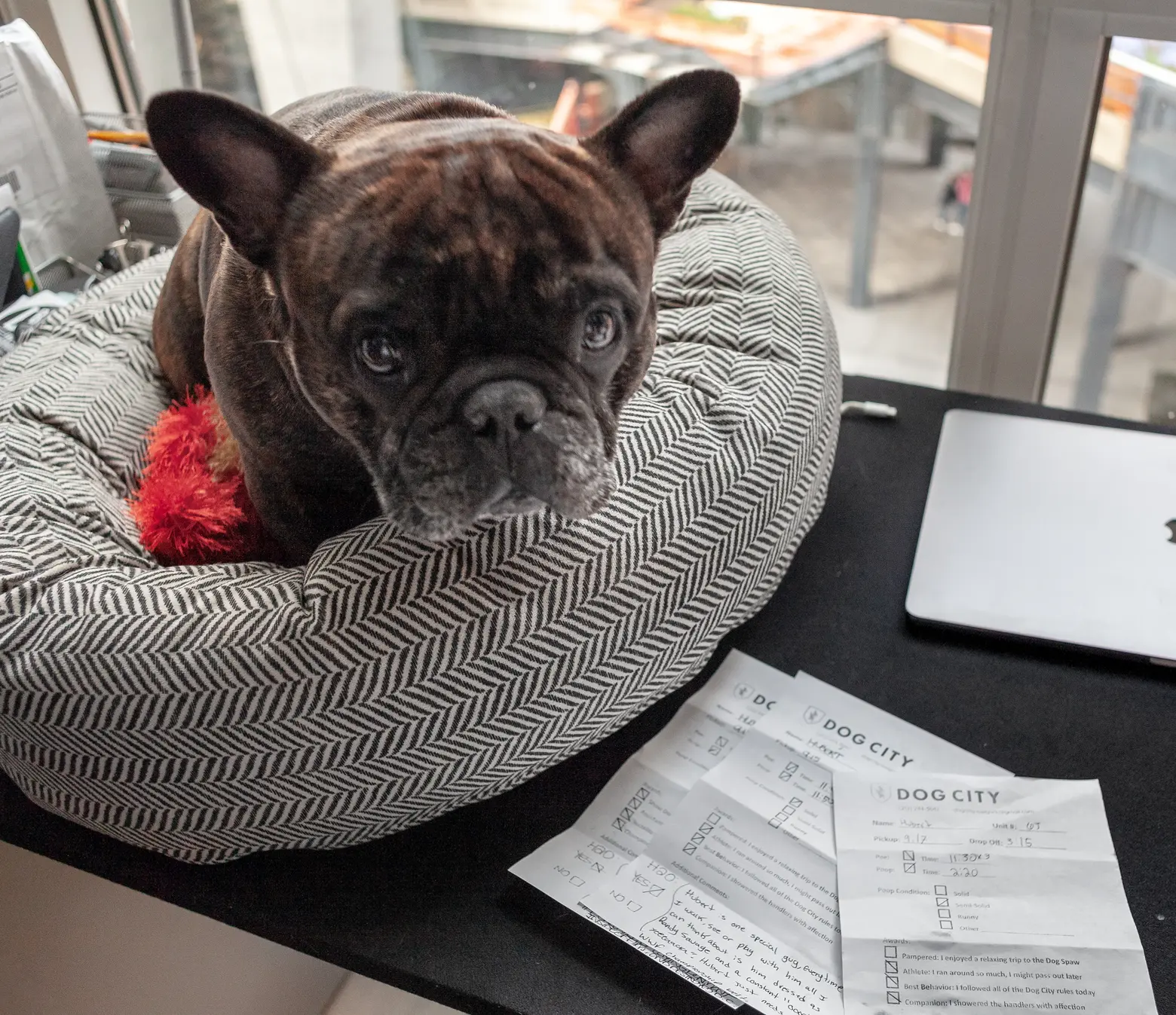 Hubert in his dog bed up on the desk, showing off his report cards!
Hubert in his dog bed up on the desk, showing off his report cards!
How is the dog culture in the building and in the neighborhood?
It is a great neighborhood for dogs. He has made some friends—pups and people—in One Hudson Yards, another Related building down 30th Street, so we often have to walk over there. There are areas under the High Line that he can go if it is raining or snowing, which is a real relief. It is a very dog-friendly building, so he has fun here. When I was out of town for 10 days last New Year’s, a petsitter stayed in the apartment with him—he said that walking around the building with Hubert was like being with a celebrity—ha!
The best thing, though, is Dog City. Anytime we run into a handler from Dog City in the building, Hubert gets super excited—you can tell that he is just crazy about them. They pick him up at the apartment in the morning and bring him back in the afternoon. When he comes home, he has a Dog City report card with some fun information about what he did all day. They also have a great Instagram and Facebook page, so you can see the lots of pics of the pups having fun. In fact, one thing I loved about the Dog City application—much more involved than others I was used to in Texas—was that the final page was a model release form. That seems very New York, right???
All photos taken by James and Karla Murray exclusively for 6sqft. Photos are not to be reproduced without written permission from 6sqft.
